Affiliate links on Android Authority may earn us a commission. Learn more.
HTC 10 vs Samsung Galaxy S7 / Edge vs LG G5
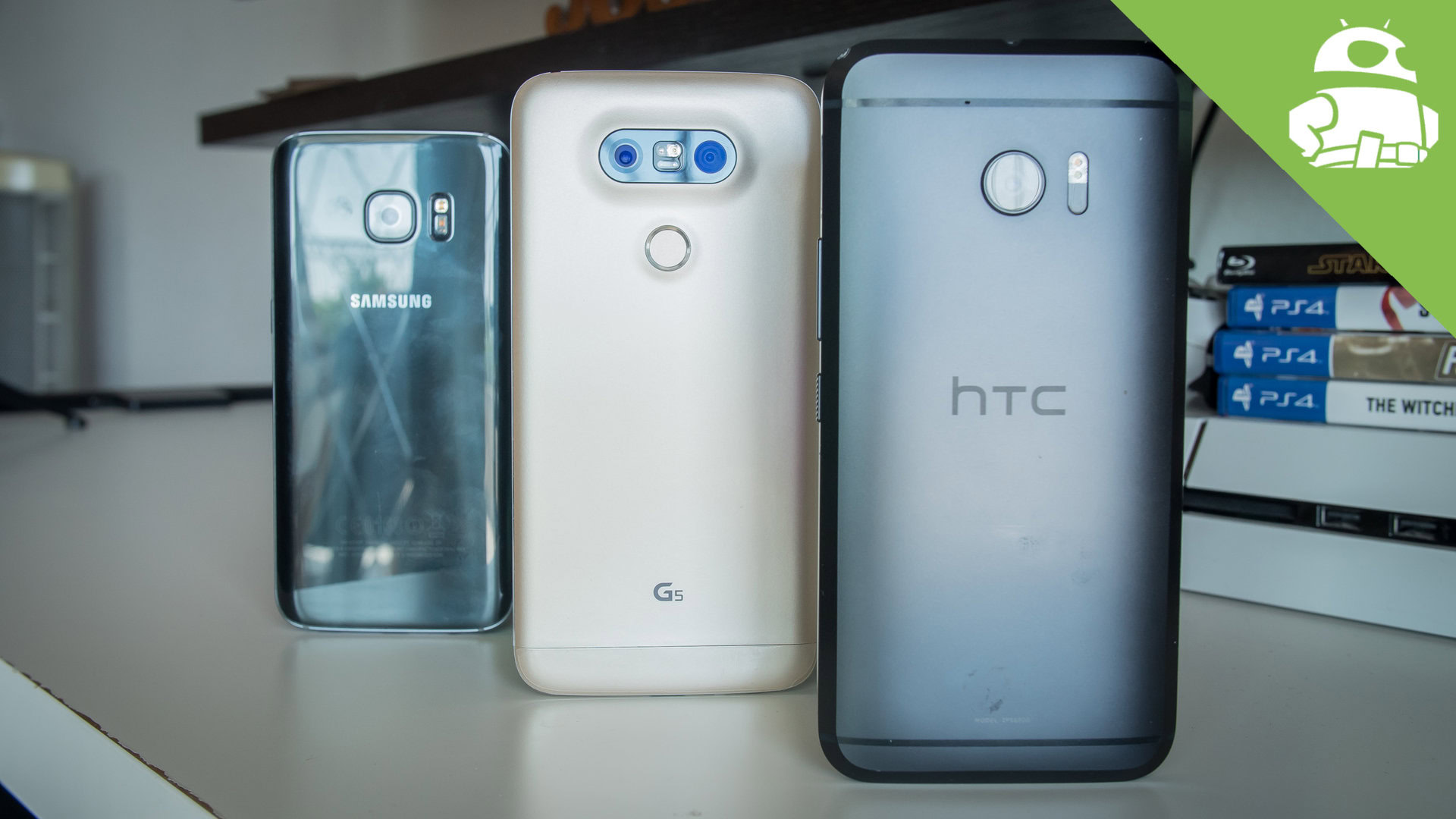
In the Android world, we follow a familiar release cycle when it comes to flagship smartphones, mostly centered around the two major trade shows, MWC and IFA. This year, Samsung and LG were first out of the gate with their respective flagship offerings being showcased back during MWC 2016, and while HTCwas a little late to the party, we now have all three high-end offerings to choose from.
Each device brings something unique to the table to help distinguish themselves from the other, and we’ve covered them extensively here at Android Authority with comprehensive reviews, in-depth comparisons, and feature focus articles. Which is the best of the lot? That is what we aim to find out, as we take a closer look at the HTC 10 vs Samsung Galaxy S7 / Galaxy S7 Edge vs LG G5 in this unique triple-threat versus!
Design
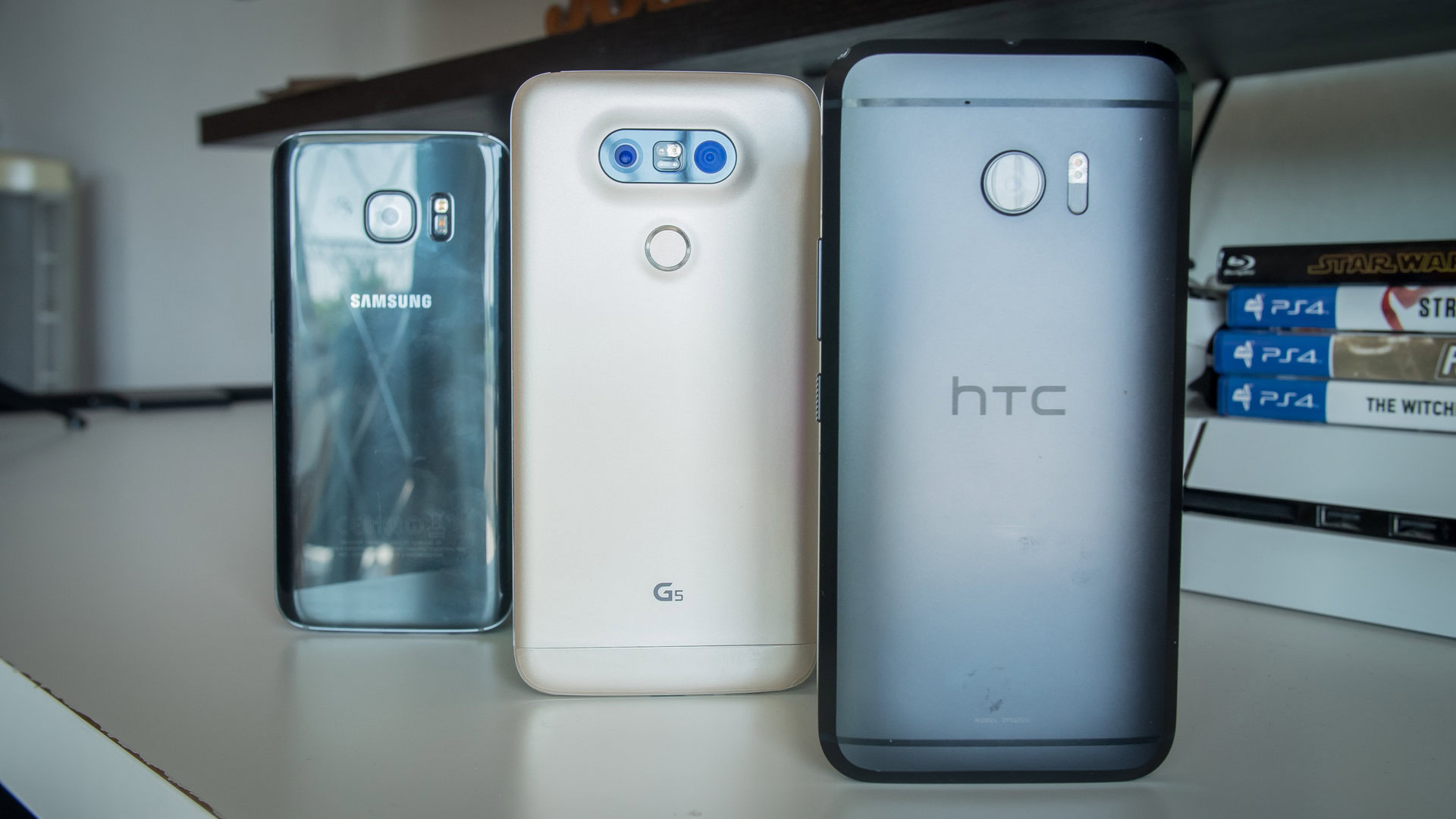
In design, we start with the LG G5, given its complete departure from the norm with regards to design and build quality. The G5 now features a full-metal construction, but comes with a microdized coating; this essentially means that the device has a coat of primer and has been painted, which has proven to be a controversial decision. This results in the phone not feeling like a true metal device, and you don’t get the same premium feel that you get with other smartphones boasting metal constructions.
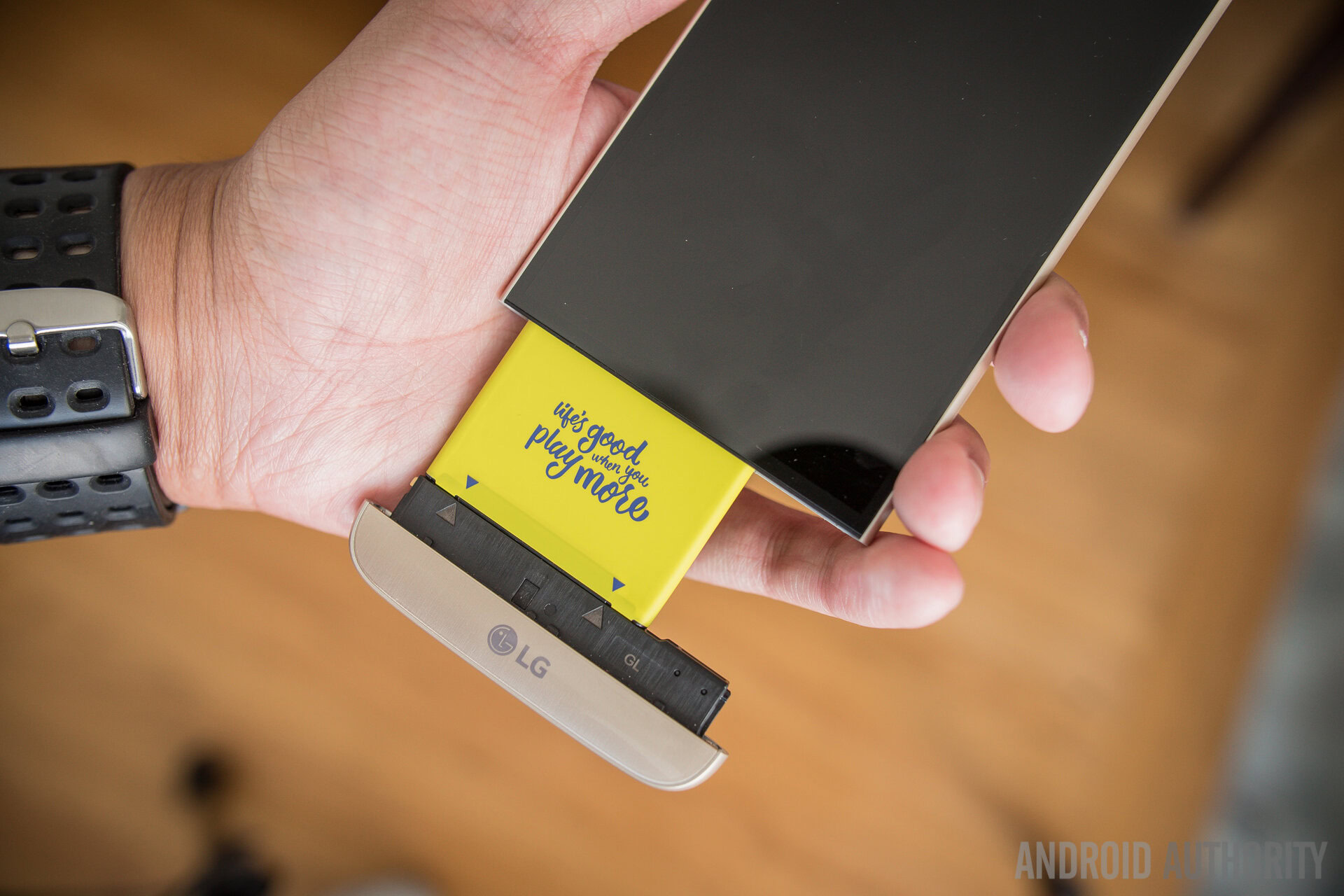
The unique aspect of the LG G5 is that it is a modular phone, with a bottom chin that is removable. This not only allows LG to to retain staple features like a replaceable battery – despite the move to a metal build – but you also get what LG calls “Friends,” which includes modules and peripherals. The modules include the camera grip, which gives you physical dials and buttons to control the camera, and the Bang & Olufsen audio DAC, that will offer better quality audio.
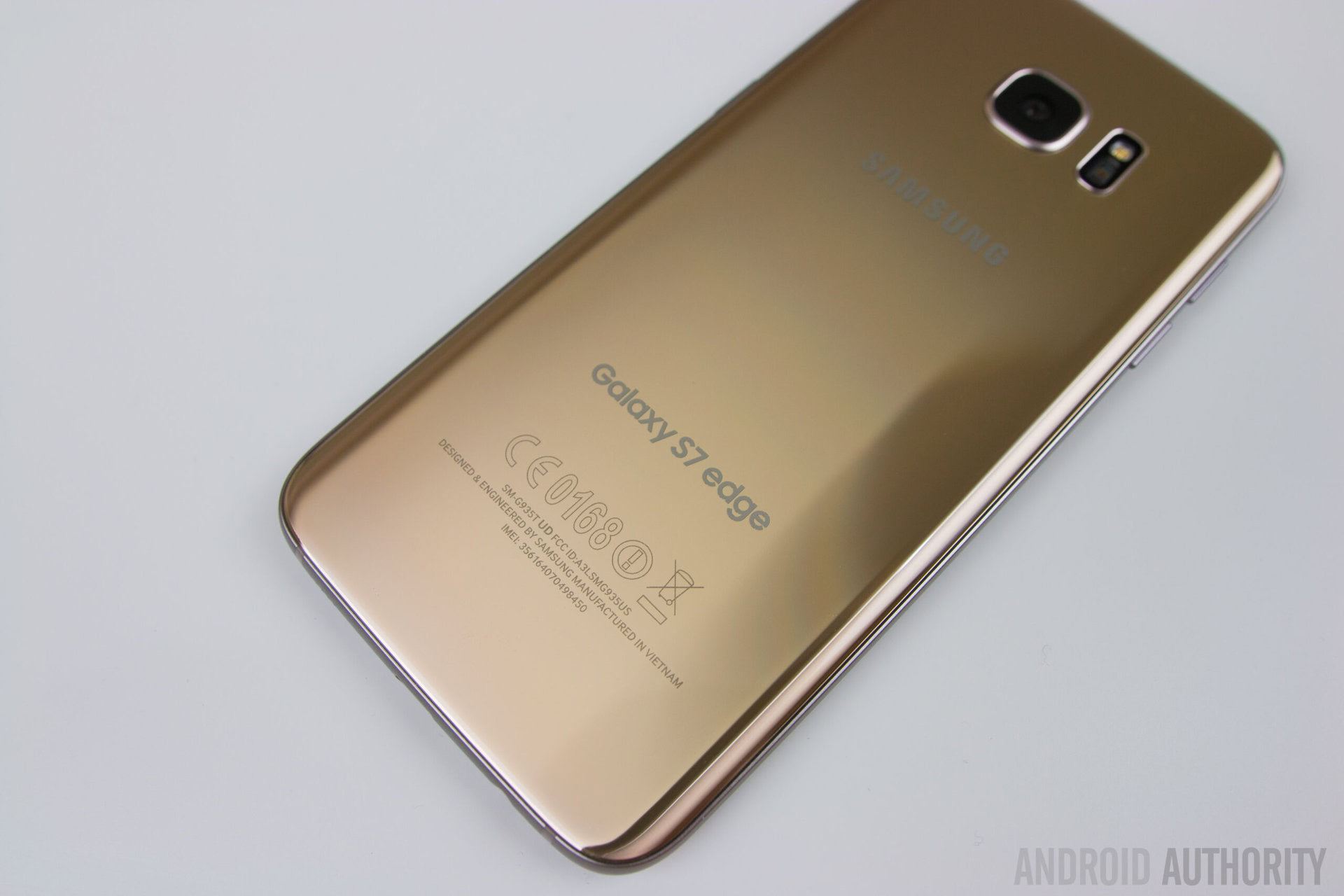
With the Galaxy S7 and Galaxy S7 Edge, Samsung continues what it started with their 2015 flagships, with both devices retaining a unibody metal and glass construction. There have been some refinements made along the way, such as the curves along the sides on the back – first seen with the Galaxy Note 5 – to help with the handling experience. Both are slightly thicker than their predecessors, to make room for larger batteries, but that also helped make the camera protrusion on the back far less prominent.
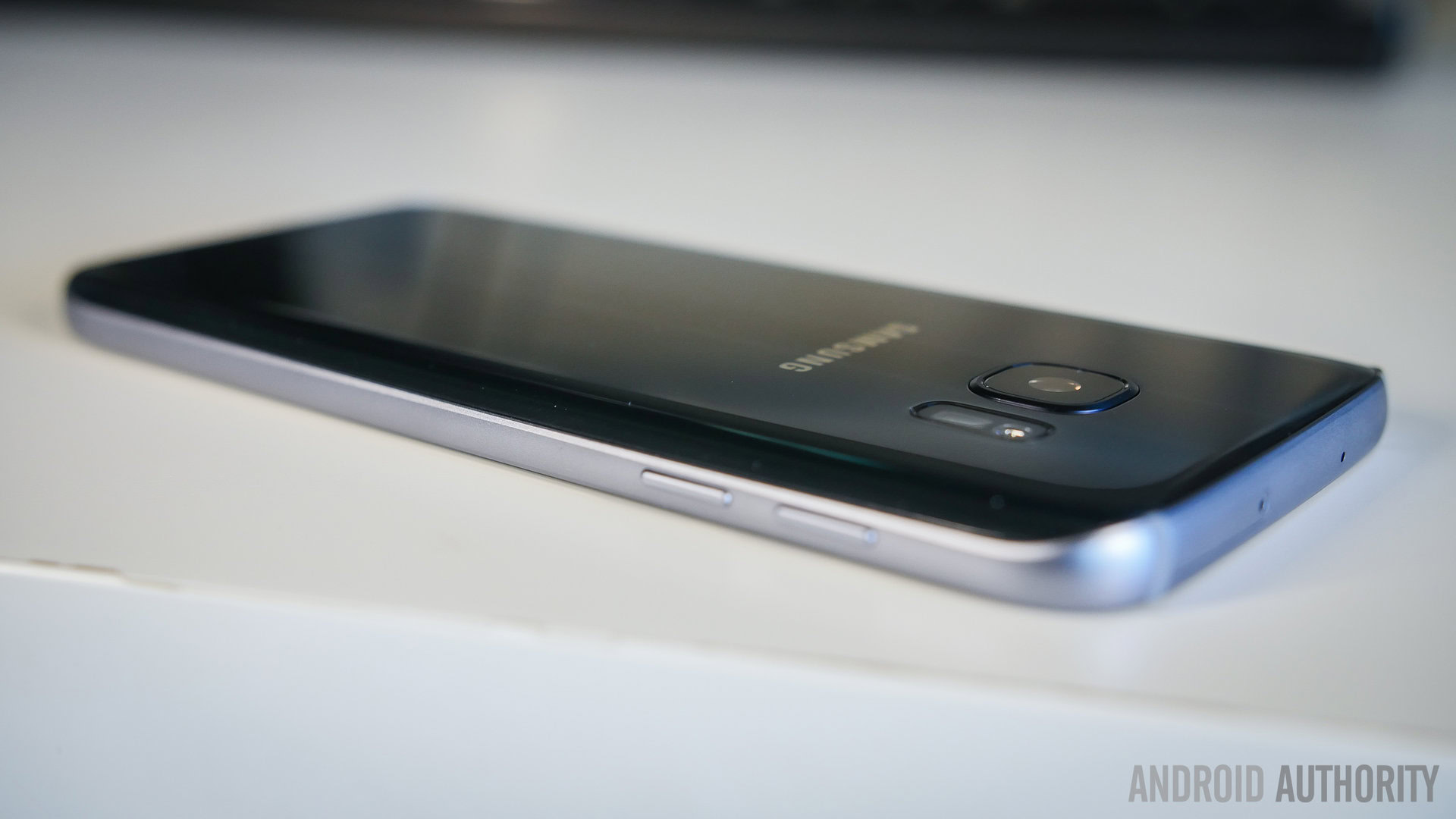
The Galaxy S7 Edge, with its 5.5-inch display, is bigger than its flagship counterpart, and of course, comes with the dual curves along the sides of the display that gives it its name. The curved edges aren’t just aesthetically pleasing, but come with an improved set of features that make them more useful.
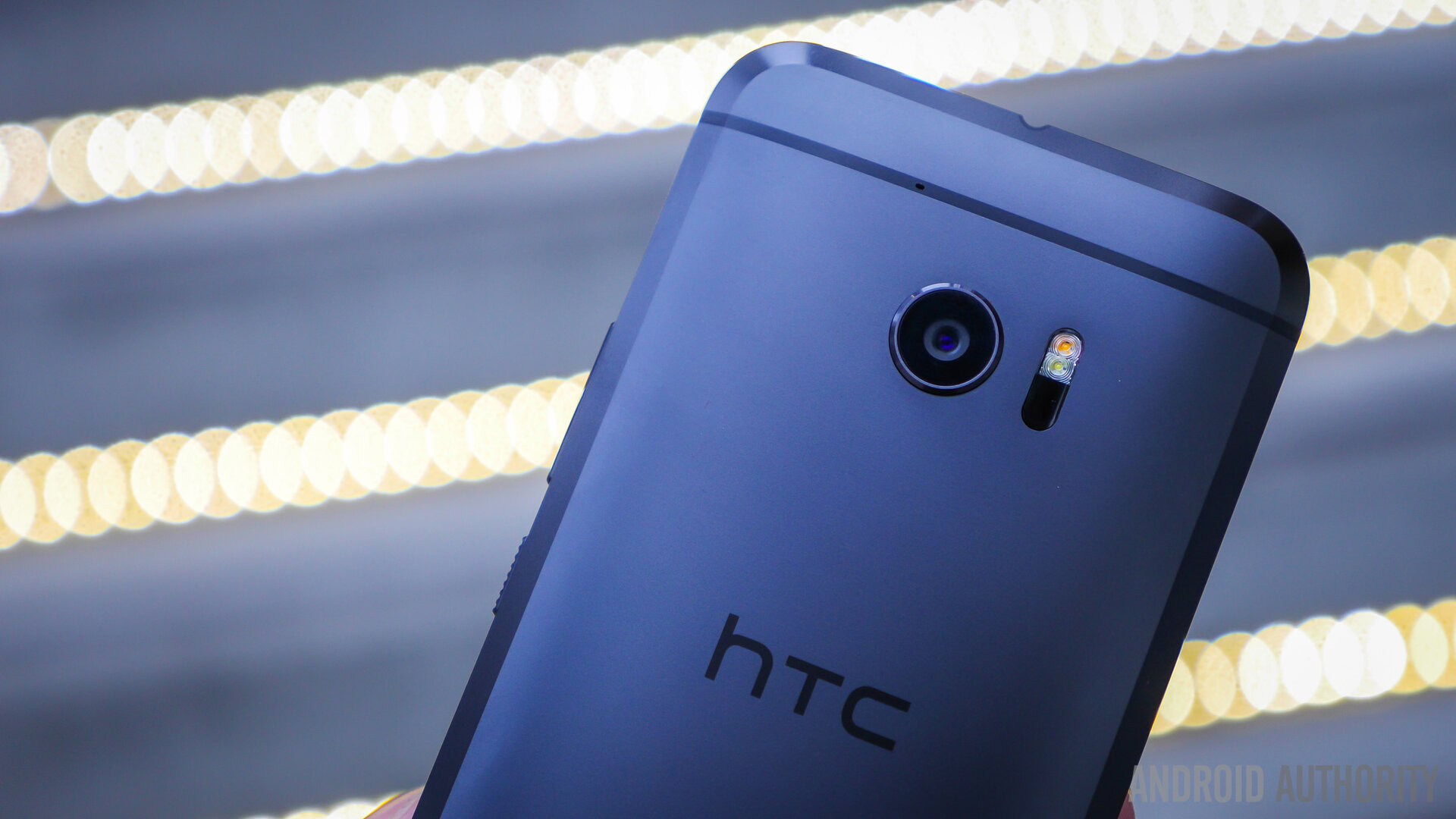
Moving on to the HTC10, HTCbrings back the premium metal build that the company is known for. The device is bigger than its predecessor, courtesy of a larger 5.2-inch screen, and the extra size appears in the form of chamfered edges all around the back, that gives the phone a nice silhouetted look. This provides a subtle aesthetic that makes the phone look really good. The HTC10 is relatively compact, and allows for a handling experience that is manageable for the most part, but the metal backing does prove to be quite slippery, which can take some getting used to.
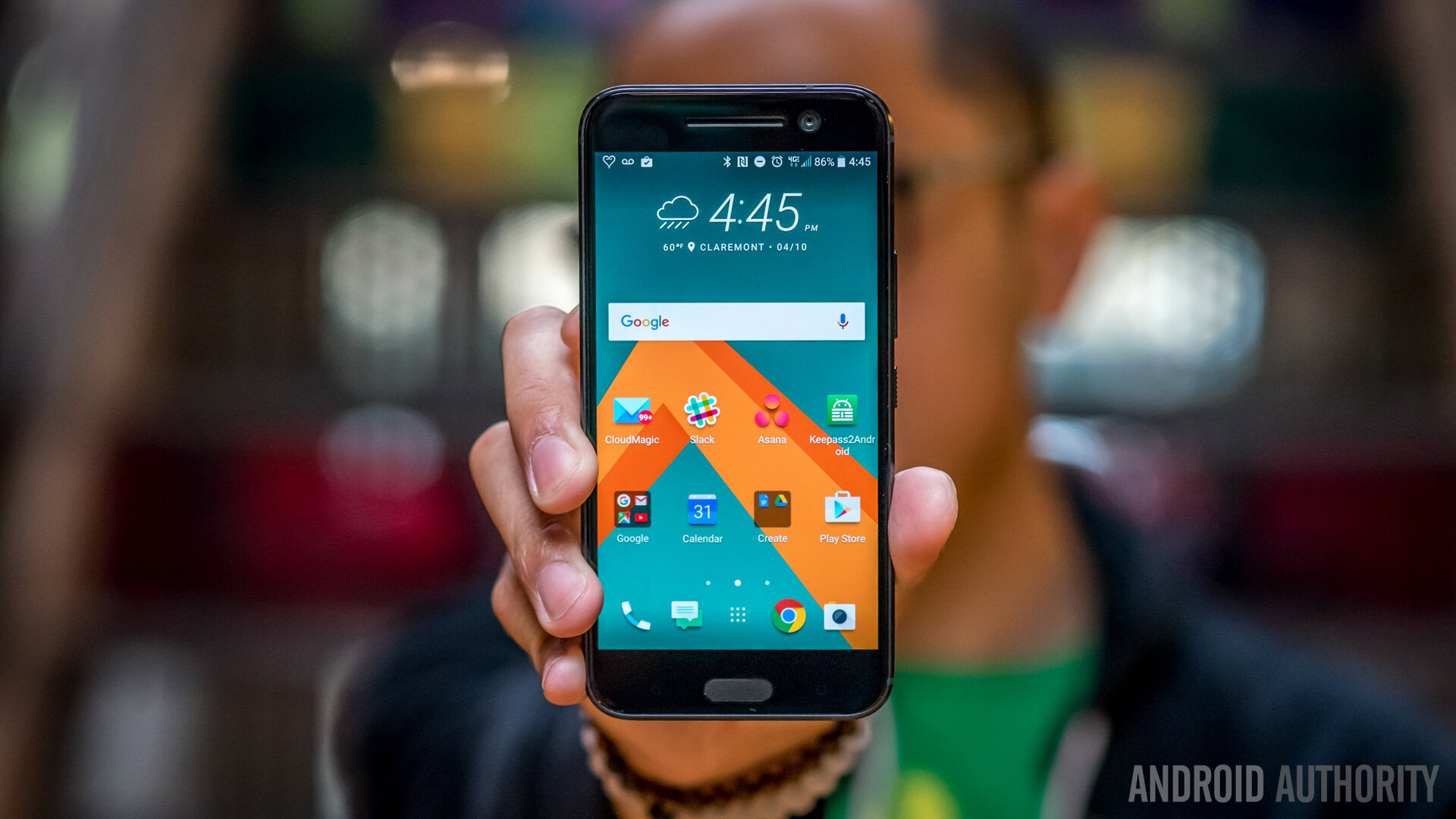
The main changes with the latest HTCflagship are seen up front, with the dual front-facing speakers no longer available, to make way for a fingerprint scanner below the display. BoomSound is still available however, with one speaker placed above the display up front, coupled with a woofer at the bottom, which adds more to the lower mids and lows when it comes to audio. Overall, the HTC10 feels a lot like the phone HTCshould have been making until now, with the dark grey version looking especially nice. If you are in the market for a metal phone, the HTC10 is the one to beat.
Display
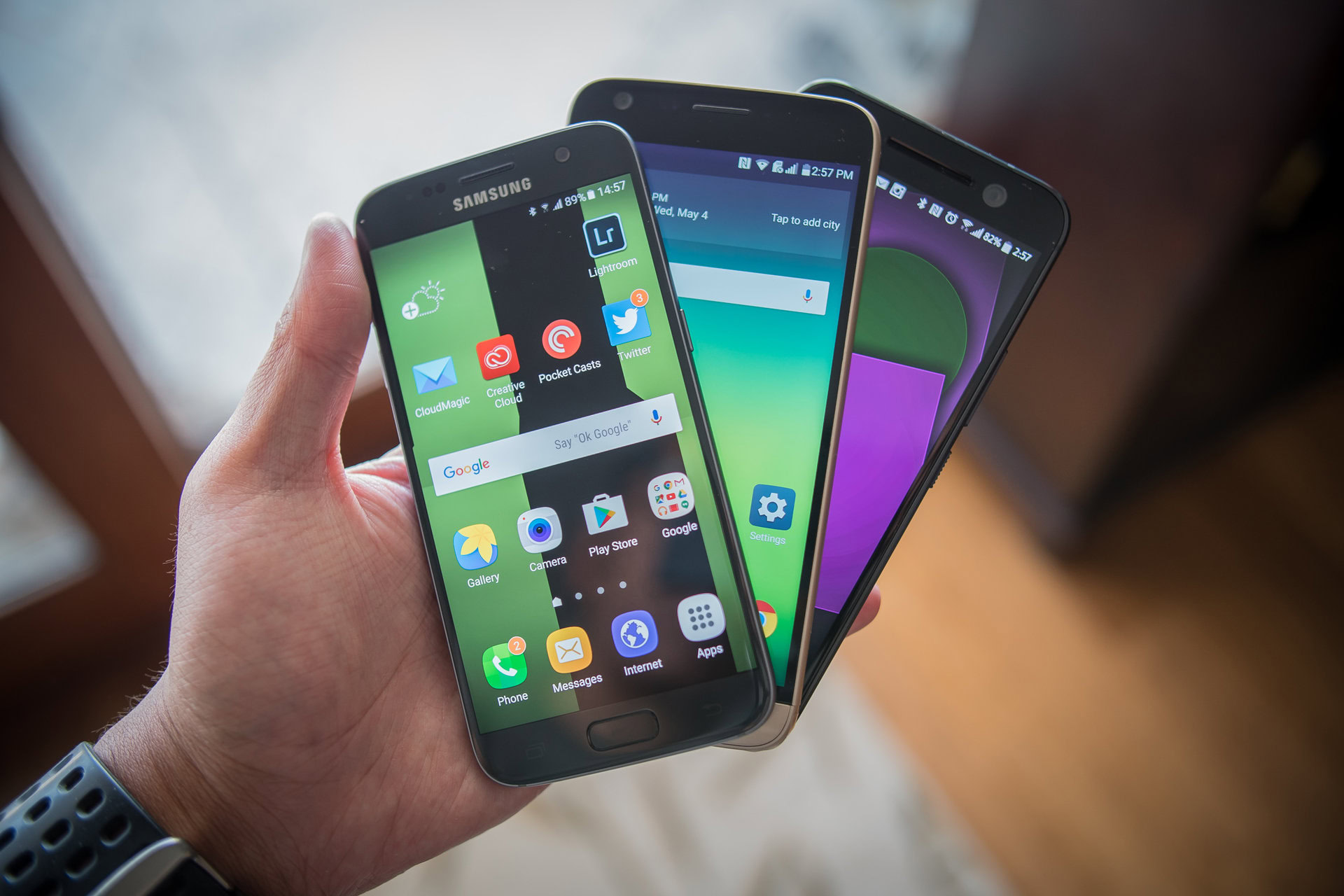
All the smartphones comes with Quad HD displays, with differing sizes – 5.1-inches for the Galaxy S7, 5.2-inches for the HTC10, 5.3-inches for the LG G5, and 5.5-inches for the Galaxy S7 Edge – resulting in nominal differences in the pixel densities. The distinction however, comes in the form of the differing underlying technologies, with the Samsung smartphones featuring Super AMOLED screens, while the HTC10 and LG G5 come with LCD displays, Super LCD 5 and IPS LCD respectively.
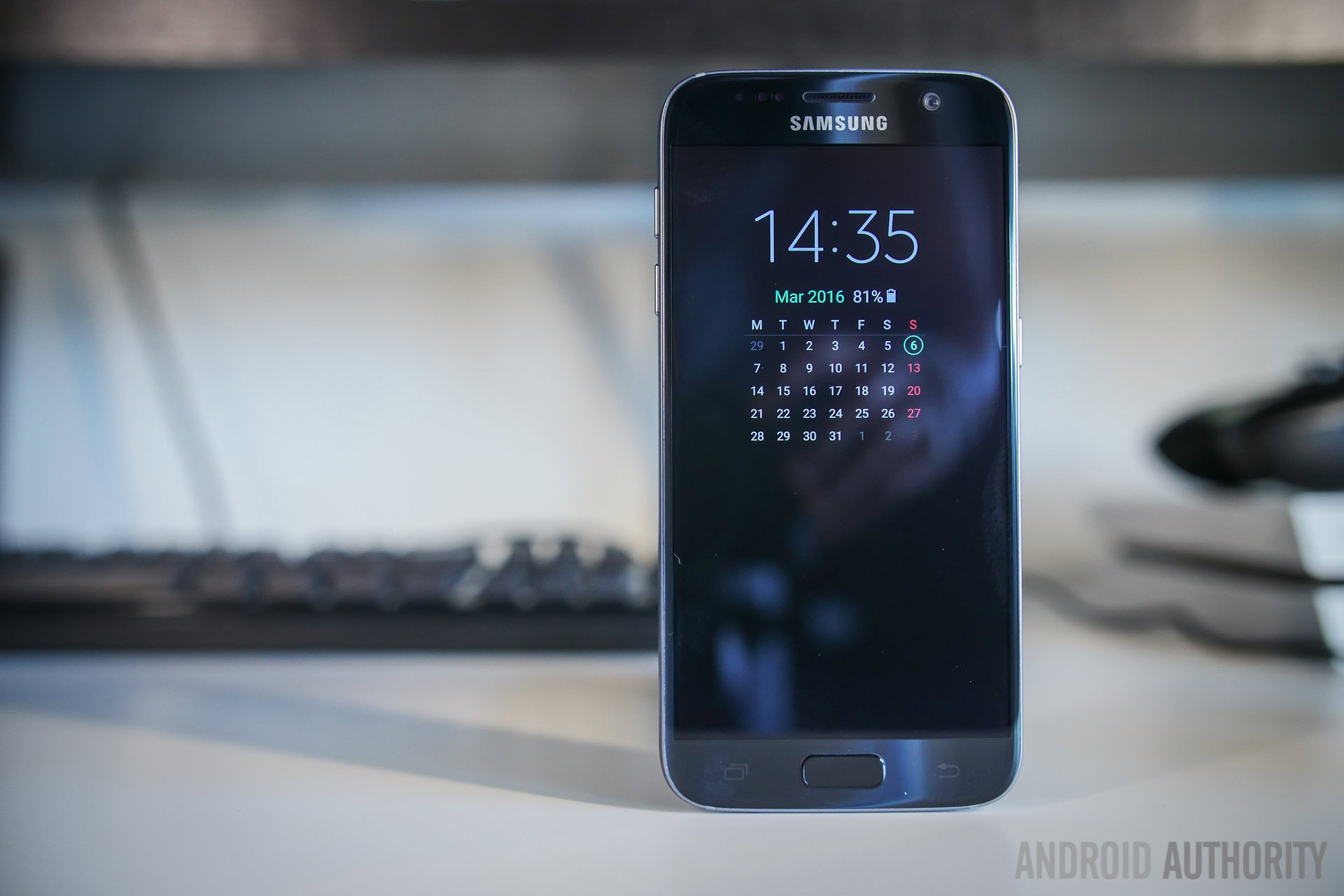
AMOLED displays are what we usually prefer, especially when it comes to Samsung’s Super AMOLED screens, that offer deep, inky blacks, and vibrant, saturated colors, that allow for a more immersive experience. AMOLED displays also see their advantage with regards to frugal battery consumption when using something like night clocks or dark themes. Overall, AMOLED screens do appear to provide the more immersive and engulfing experience.
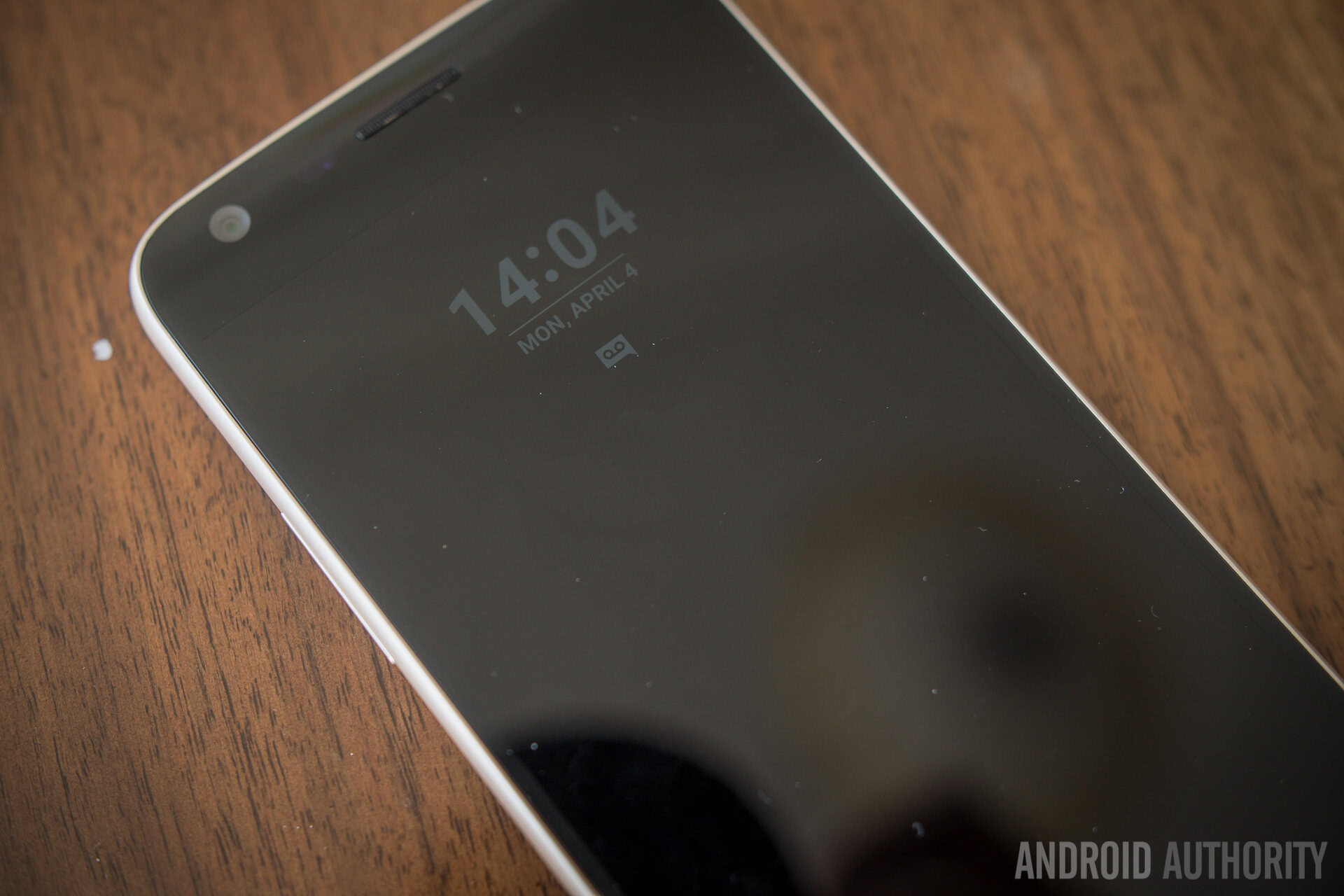
The HTC10 doesn’t come with an Always On display, a feature that is available with the LG G5 and the Samsung Galaxy S7 and Galaxy S7 Edge. However, the Always On display of the LG G5 is lacking when compared to the Samsung devices, mostly due to the nature of the LCD panel. It would result in significant battery drain if the brightness of the Always On display was set to higher levels, so the information on the screen is actually quite dim. While it is quite easy to see indoors, it is nearly impossible to do so when outdoors and in direct sunlight. When it comes to the information available with the Always On displays, the LG G5 does have the leg up over the Samsung devices though, with the former able to show notifications from third-party applications as well.
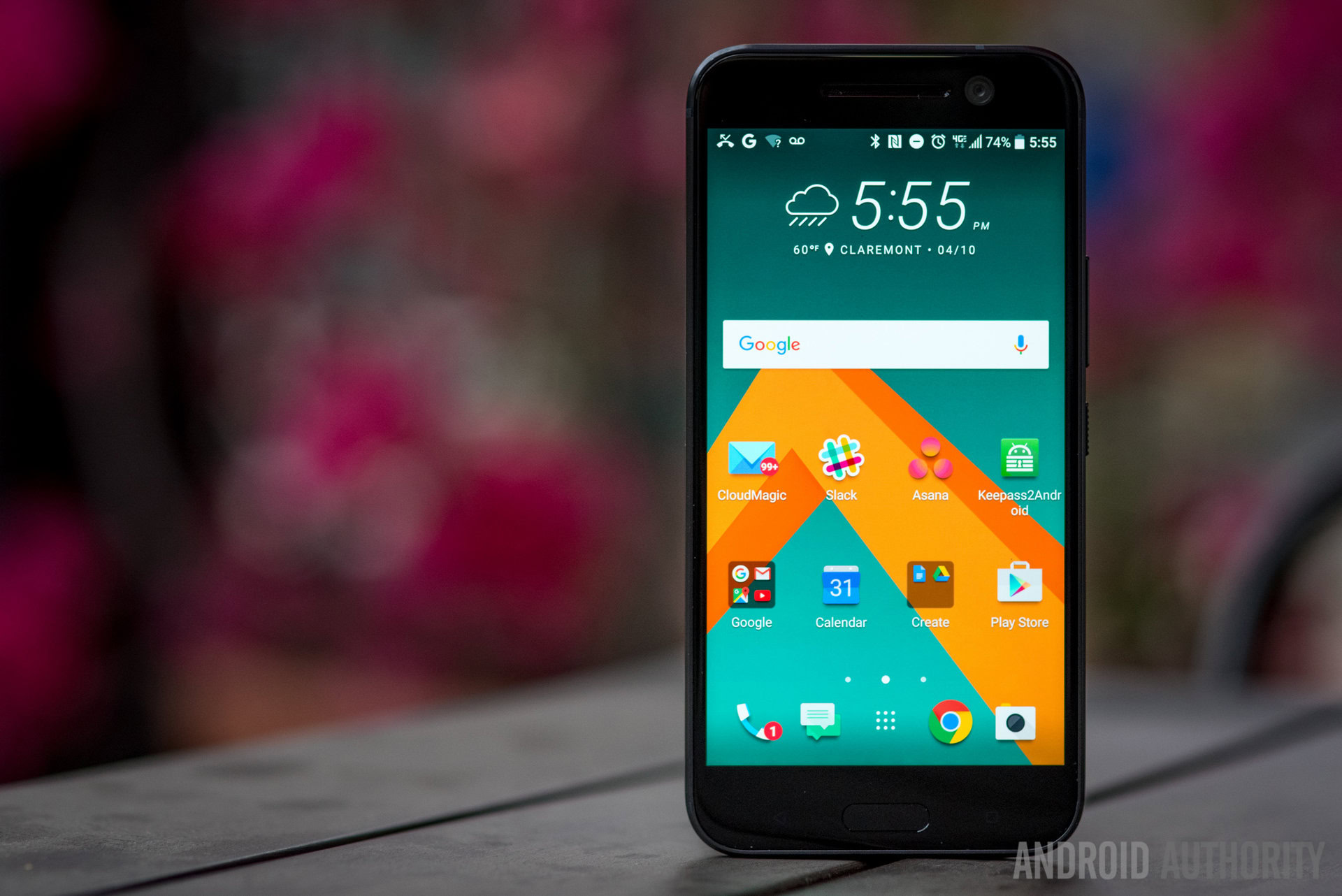
With the Super LCD 5 display of the HTC10, you do get a decent amount of saturation and good color reproduction,. With HTCis adhering to the NTSC standard, the display is certainly no slouch, even if it may not stand up to the Super AMOLED screens of the Samsung flagships. When it comes to the display, it is the LG G5 that unfortunately seems to fall behind the competition.
Performance
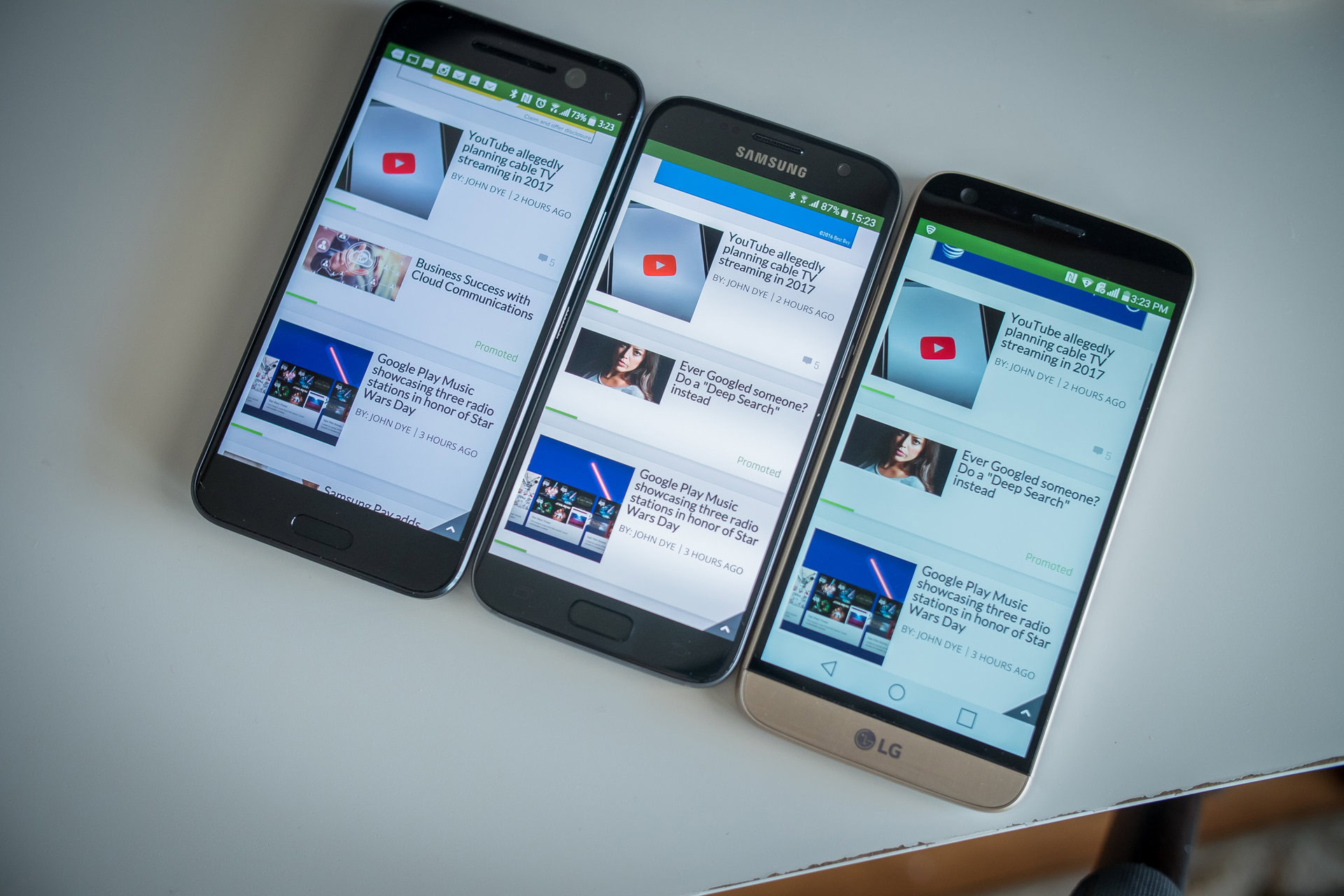
When it comes to performance, every one of these flagship smartphones feature identical processing packages, and are powered by a quad-core Qualcomm Snapdragon 820 processor, clocked at 2.15 GHz, and backed by the Adreno 530 GPU and 4 GB of RAM. As expected, the performance is fantastic across the board, and any minute differences comes down to the software optimization. The performance of these devices are as smooth and snappy as expected, but worth mentioning is the Briefing screen that returns with the Samsung smartphones. There has always been an issue with lag when it comes to Samsung’s second screen experience, but the good news is that any lag or stutter is far less pronounced this time around. Of course, the Briefing screen can also be disabled if you wish to do so.
Hardware
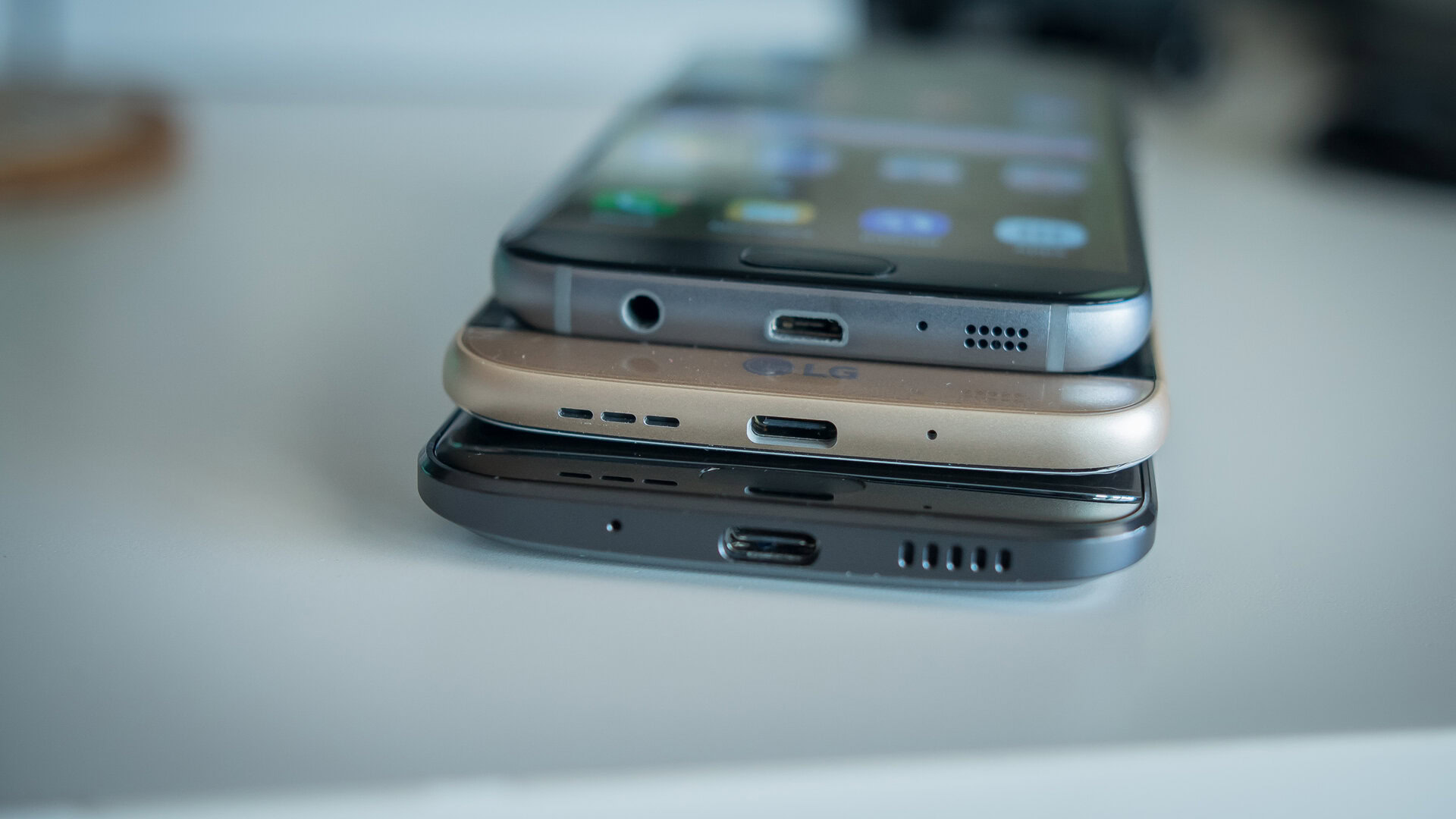
Hardware is one of the most exciting sections of this triple threat versus, with every device having something different and unique to offer. Starting with the HTC10, this distinguishing feature comes in the form of BoomSound speakers, which is something that HTChas always offered, but now comes in a different iteration. To make way for the fingerprint scanner up front, what you now get is a front-facing speaker above the display, coupled with a woofer at the bottom that helps with the low ends in the audio. These speakers don’t get as loud when compared to previous generation HTCflagships, but it still provides a nice rich sound.
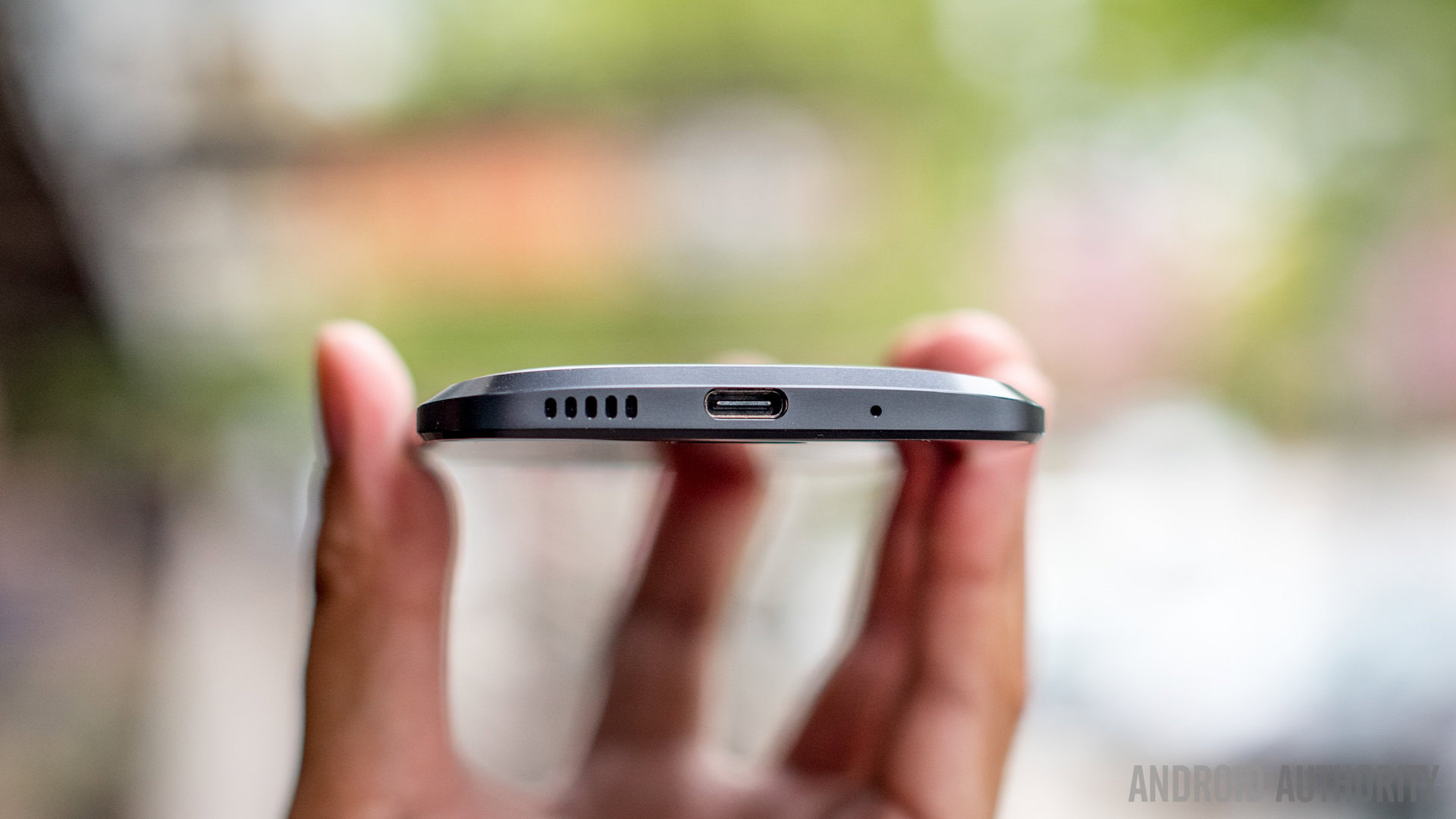
That said, the audio experience gets a significant boost when you plug in headphones. The HTC10 comes with an AMP and a 24-bit DAC installed on the phone, that will allow for some really nice sound stages when using a good pair of headphones. When it comes to the audio and music listening experience, the HTC10 is undoubtedly far ahead of its competitors.
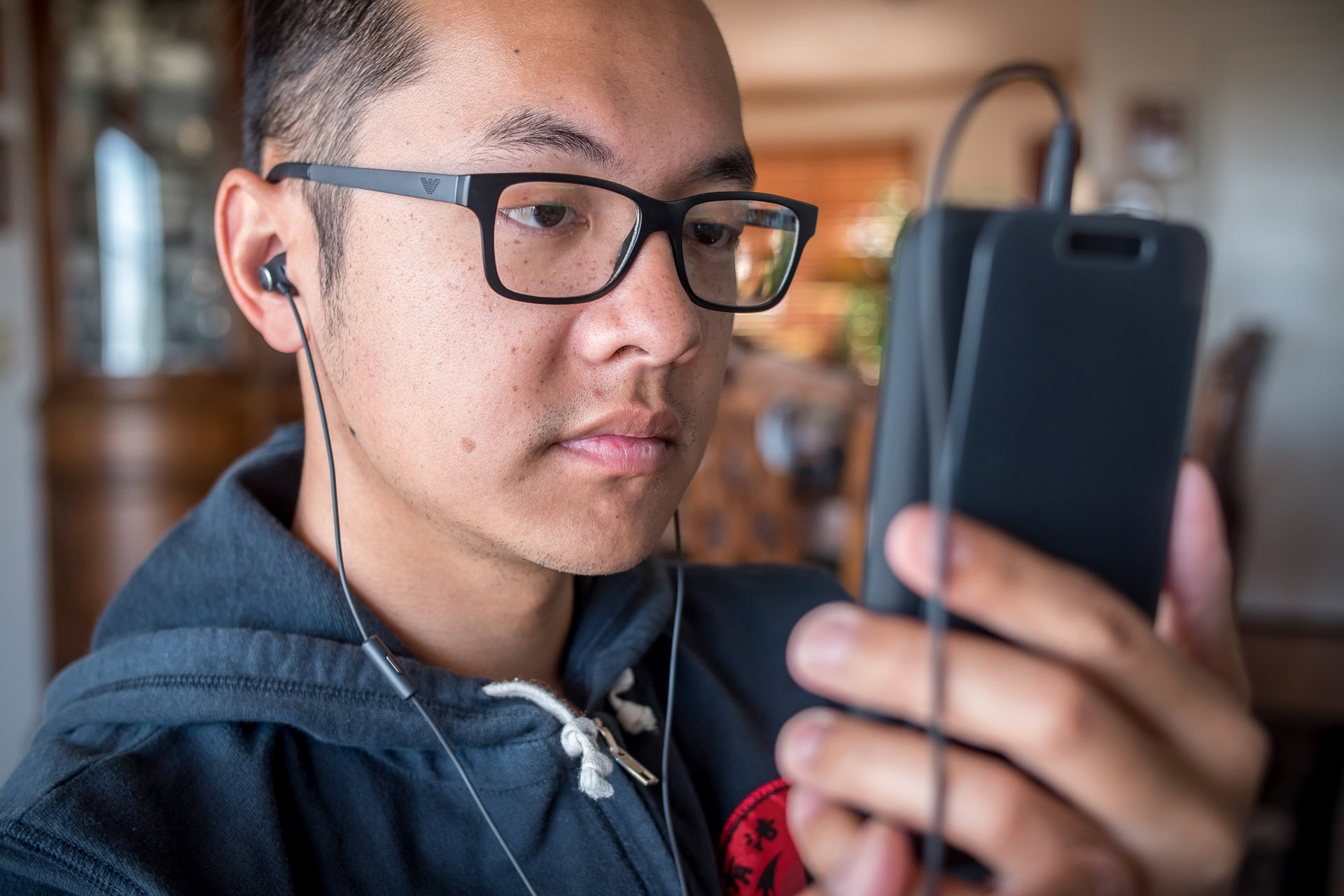
When it comes to the other hardware features of the HTC10, 32 GB and 64 GB are the internal storage options available, along with support for expandable storage via microSD card for up to an additional 200 GB. As mentioned, there is a fingerprint scanner up front, which is as fast and accurate as expected. The device doesn’t feature water resistance, and is splash proof instead, with a rating that isn’t as high as that of the Samsung Galaxy S7. Overall, what you get with the HTC10 is a solid smartphone with a wonderful audio experience.
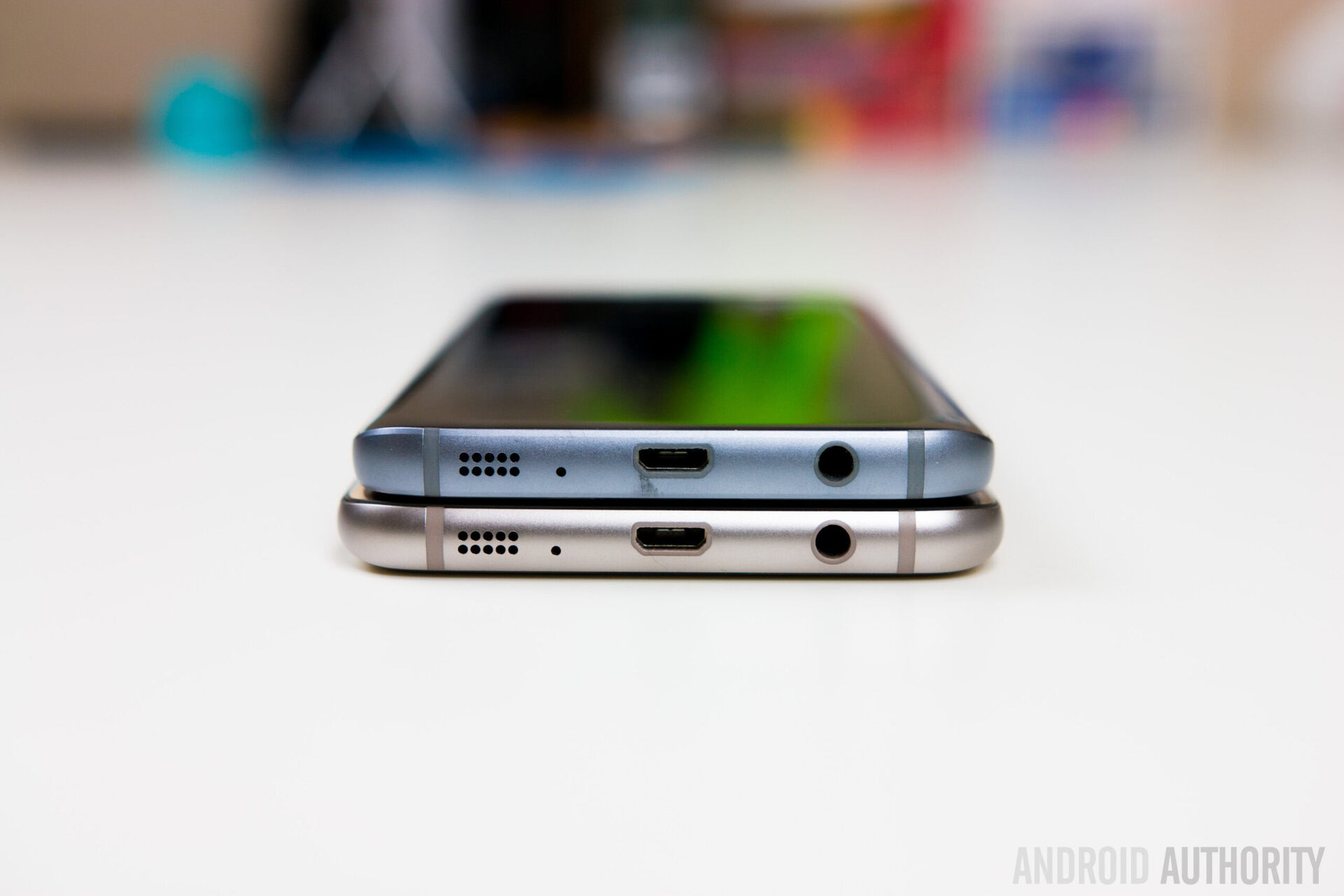
The Samsung Galaxy S7 and Galaxy S7 Edge also come with a fingerprint scanner, embedded into the tactile home button up front. You do have to press the button to use the scanner, but that shouldn’t be an issue for anyone, and the sensor is also as fast and accurate as can be. Samsung hasn’t made the move to USB Type-C just yet, with these phones coming with a standard microUSB port instead, next to which is bottom-mounted single speaker unit. The placement of the speaker isn’t ideal, and easy to cover up when using the device in the landscape orientation. The audio quality is unfortunately not the best either, with the sound slightly muffled and tinny.
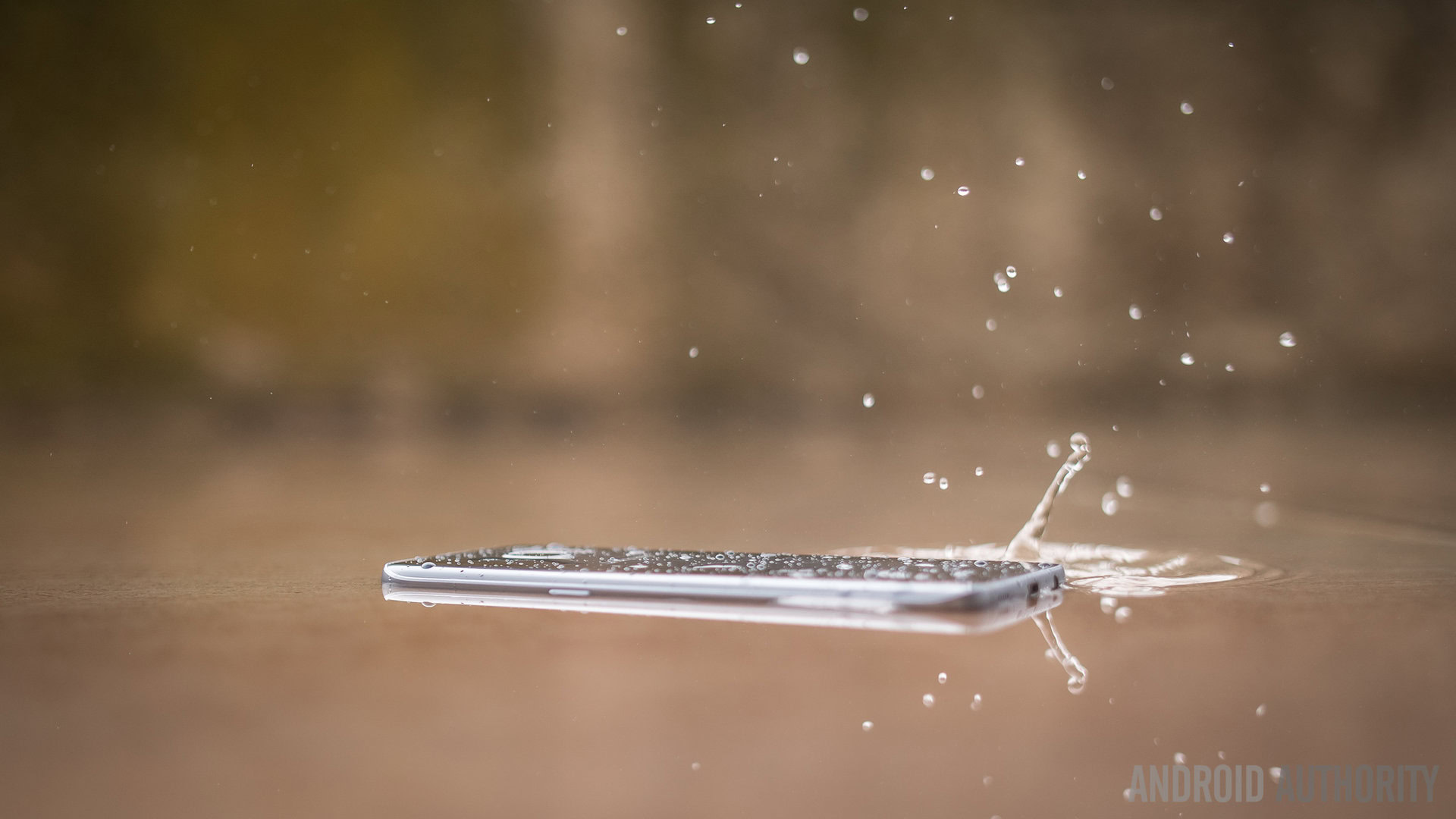
The poor audio quality may be because of the protective coating that the device has, which allows for the device to be dust and water resistant. The Samsung Galaxy S7 and Galaxy S7 Edge comes with an IP68 rating for dust and water resistance, which means that you can submerge the device in up to 1.5 meters of water for as long 30 minutes without a negative impact on performance. 32 GB and 64 GB are the in-built storage options available with these devices, and returning to the fold is expandable storage via microSD card, up to an additional 200 GB.
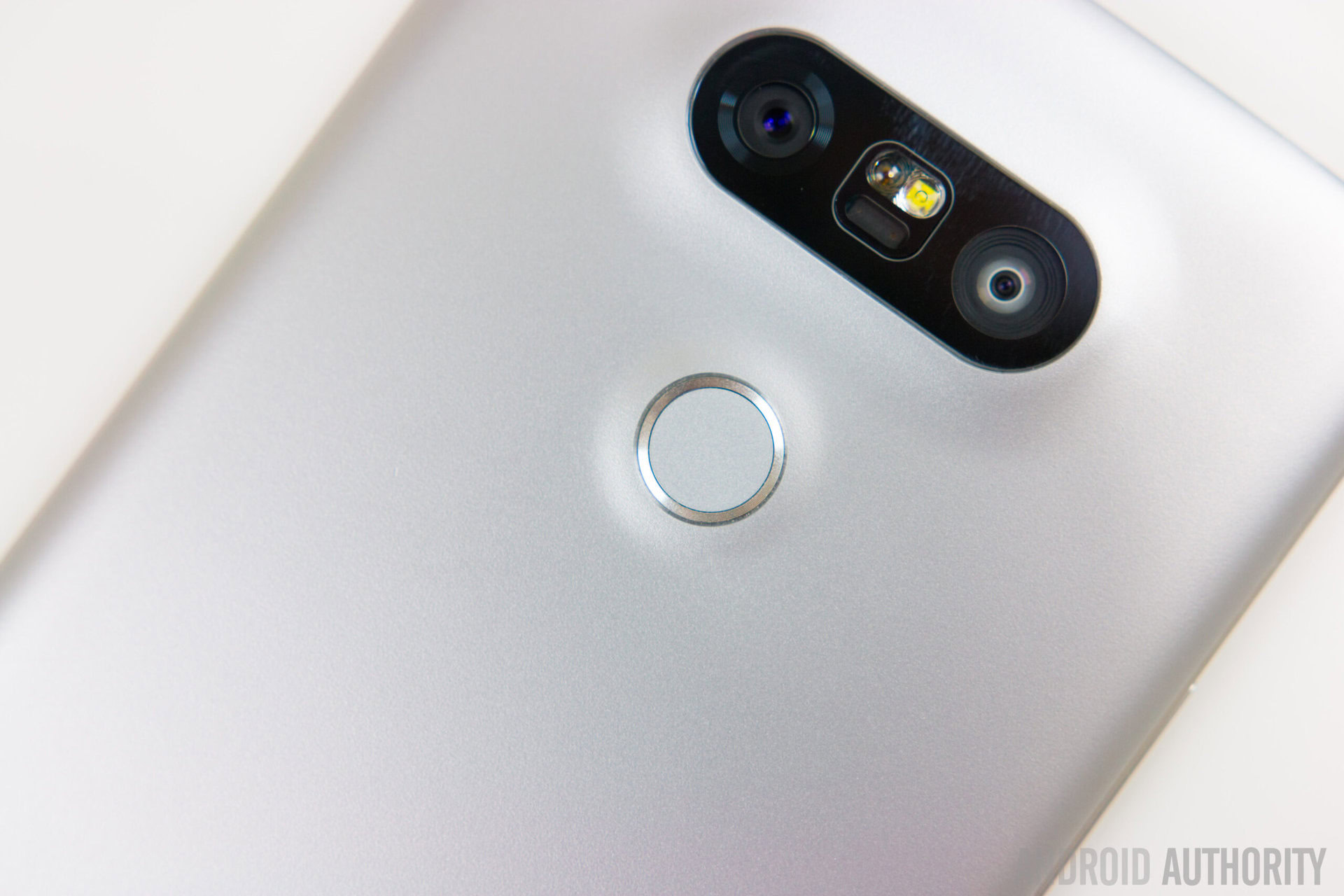
As expected, the LG G5 also comes with a fingerprint scanner embedded into the tactile power button, which is placed on the back. Unlike the Samsung phones, you don’t have to press the button to use the scanner. The sensor itself is very fast and accurate, and requires only a few taps to set up. Looking at the back, you will notice that the volume rocker is no longer on the back, and have now been moved to a more traditional placement on the side. This isn’t really an issue, but can take some getting used to if you are upgrading from a previous LG flagship, and it does take away from the uniqueness of the LG flagship line.
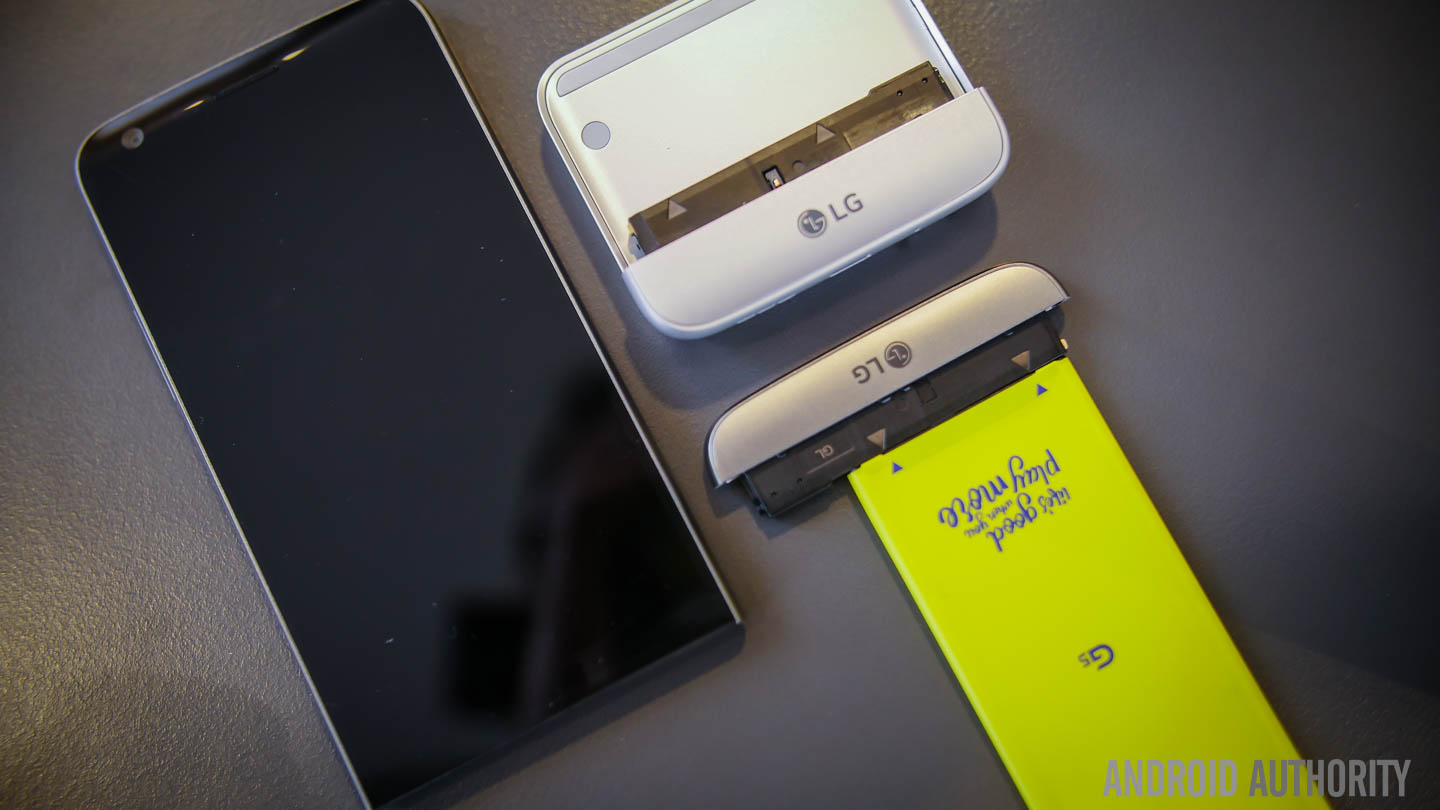
However the unique feature comes in the form of the removable bottom portion, that allows for access to the battery, and lets you attach other modules, such as a camera grip or an audio DAC, to further enhance the hardware features of this device. 32 GB is the only built-in storage option available, but like the other smartphones in this comparison, you do also get expandable storage via microSD card, up to an additional 200 GB. The LG G5 also comes with a bottom-mounted single speaker unit, but despite the unfortunate placement, the speaker actually gets quite loud, and the audio quality is also good, making it better than what is found with the Samsung flagships.
Battery life
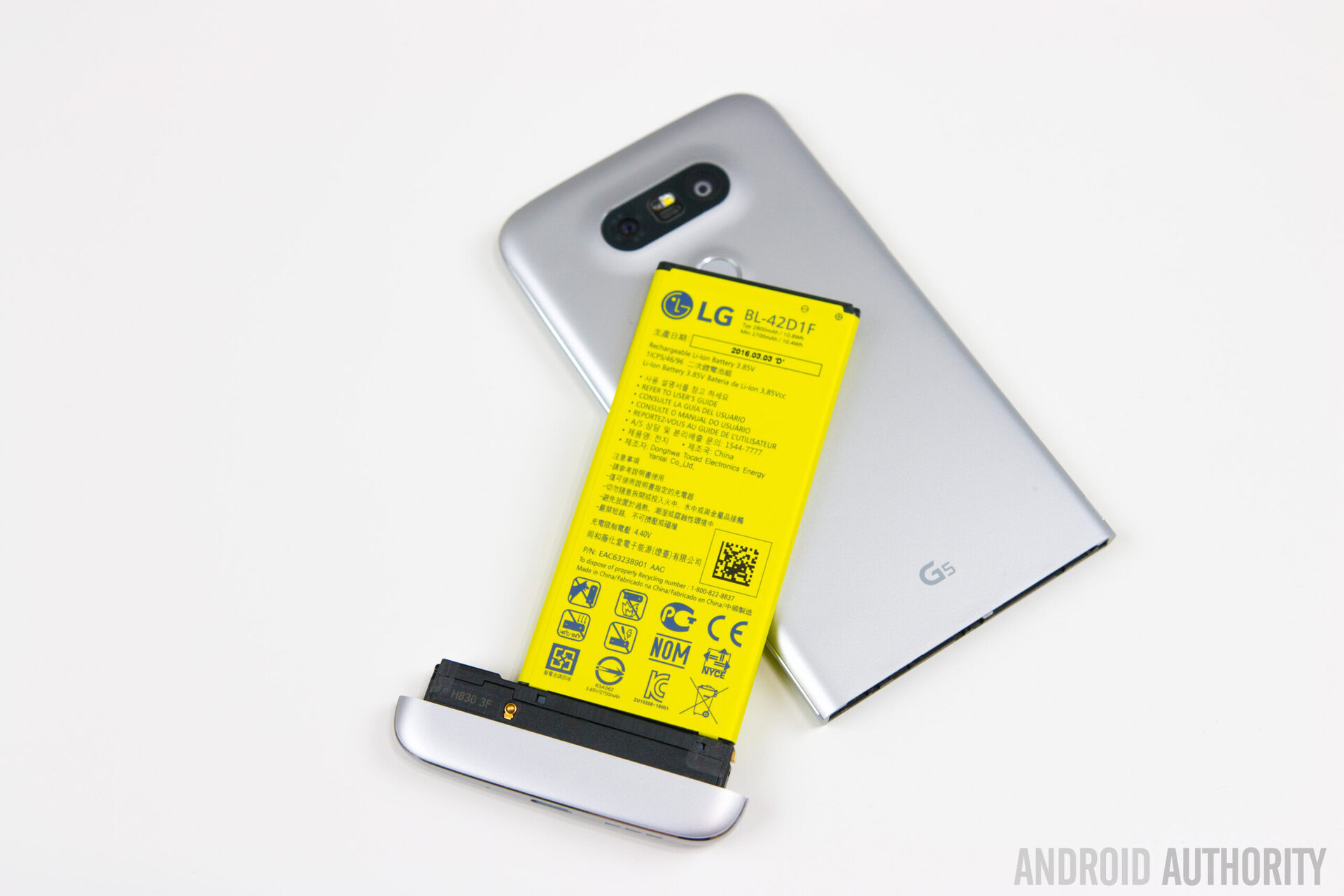
The LG G5 comes with a 2,800 mAh battery, which is the smallest of the bunch, but the advantage here is that you do have the option to carry spares. Lanh found the battery life to be pretty good, with the device able to comfortably last through a full day of use. The screen-on time numbers aren’t amazing, but with average usage that involves browsing the web, watching videos on Youtube, and playing some games, the G5 manages to provide an entire day of use.
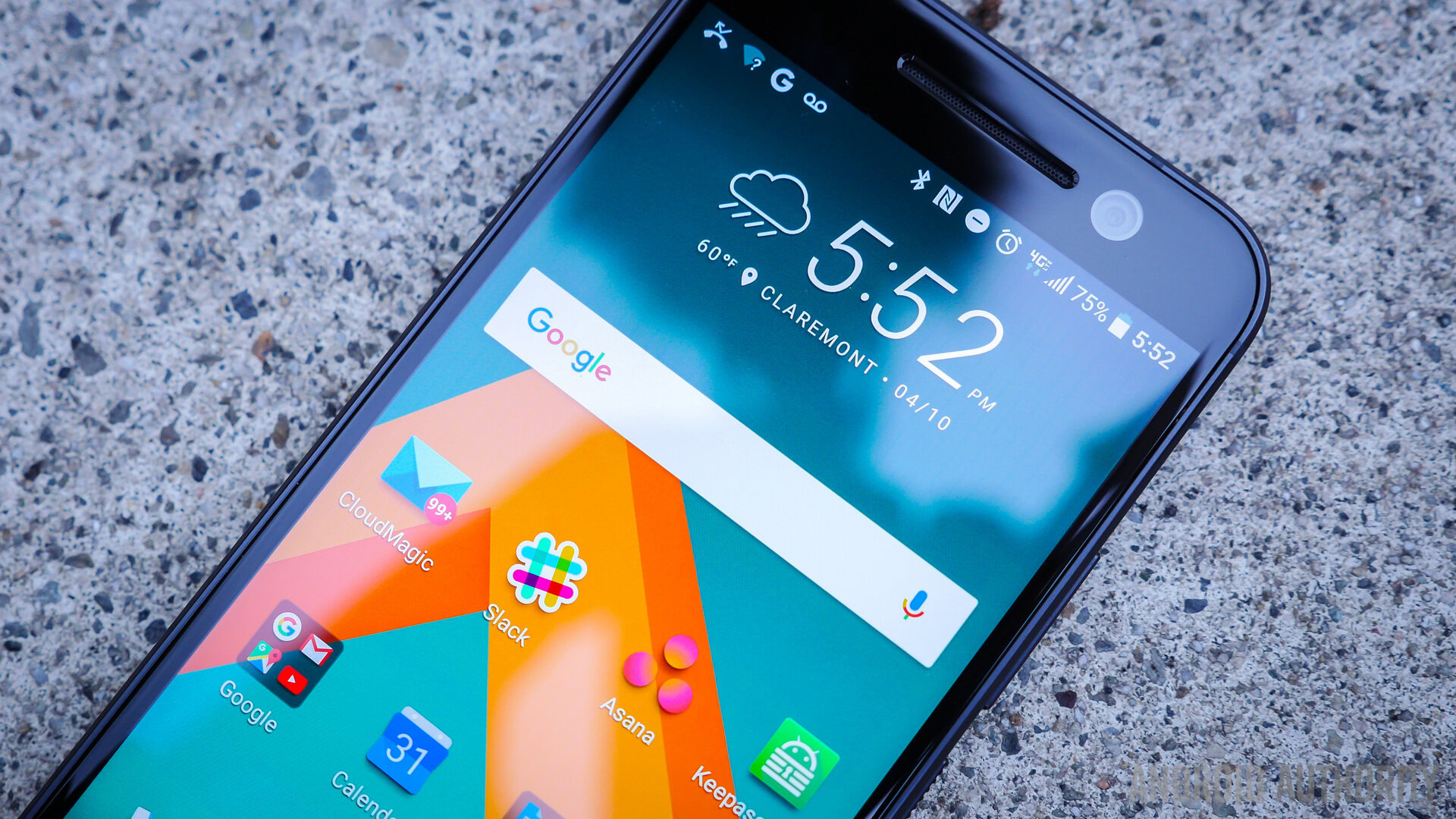
The same holds true for the HTC10 and its 3,000 mAh battery. The device can comfortably allow for a full day of use, with a screen-on time of around 4 hours, which isn’t bad. I have to mention here that my usage does involve using GPS for navigation and listening to a lot of music throughout the day, which makes the screen-on time quite impressive.
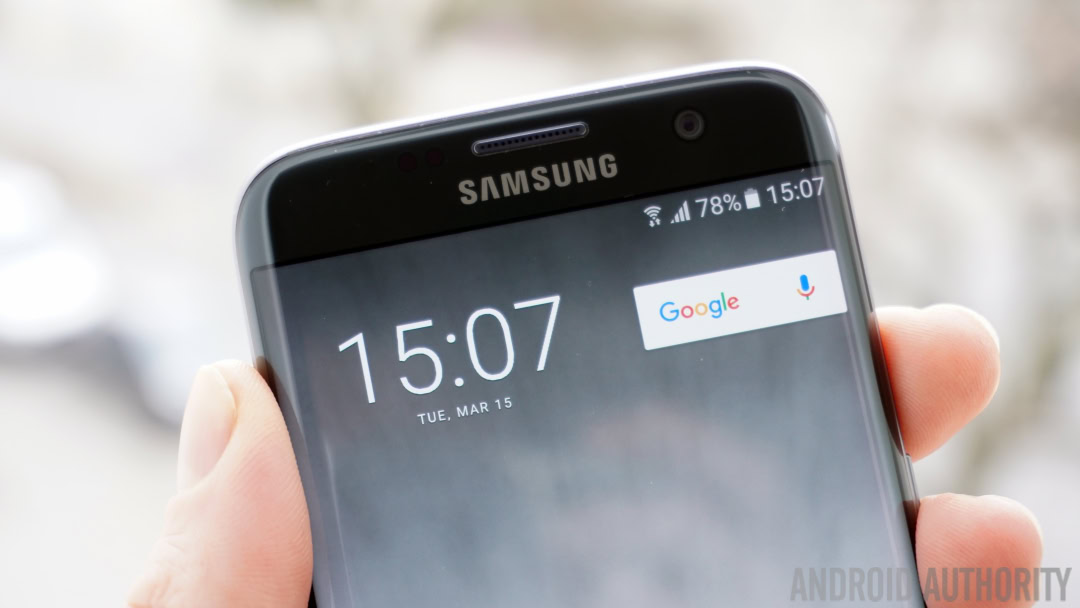
Moving on to the Samsung flagships, the Galaxy S7 and Galaxy S7 Edge come with 3,000 mAh and 3,600 mAh batteries respectively. The battery life is as expected, and not surprisingly, these phones also provide a full day of use without any issues, with around 4 hours of screen-on time with the Galaxy S7, and 4.5 hours with the Galaxy S7 Edge.
- LG G5 battery life review
- HTC 10 battery life review
- Samsung Galaxy S7 and Galaxy S7 Edge battery review
All four of these smartphones come with fast charging capabilities via Qualcomm QuickCharge 3.0 technology, which means that even if you are running low on battery, charging the device for a short amount of time will bring back a significant amount of battery life. The Samsung Galaxy S7 and Galaxy S7 Edge also come with fast wireless charging support, something that isn’t available with the LG and HTCflagships.
Camera
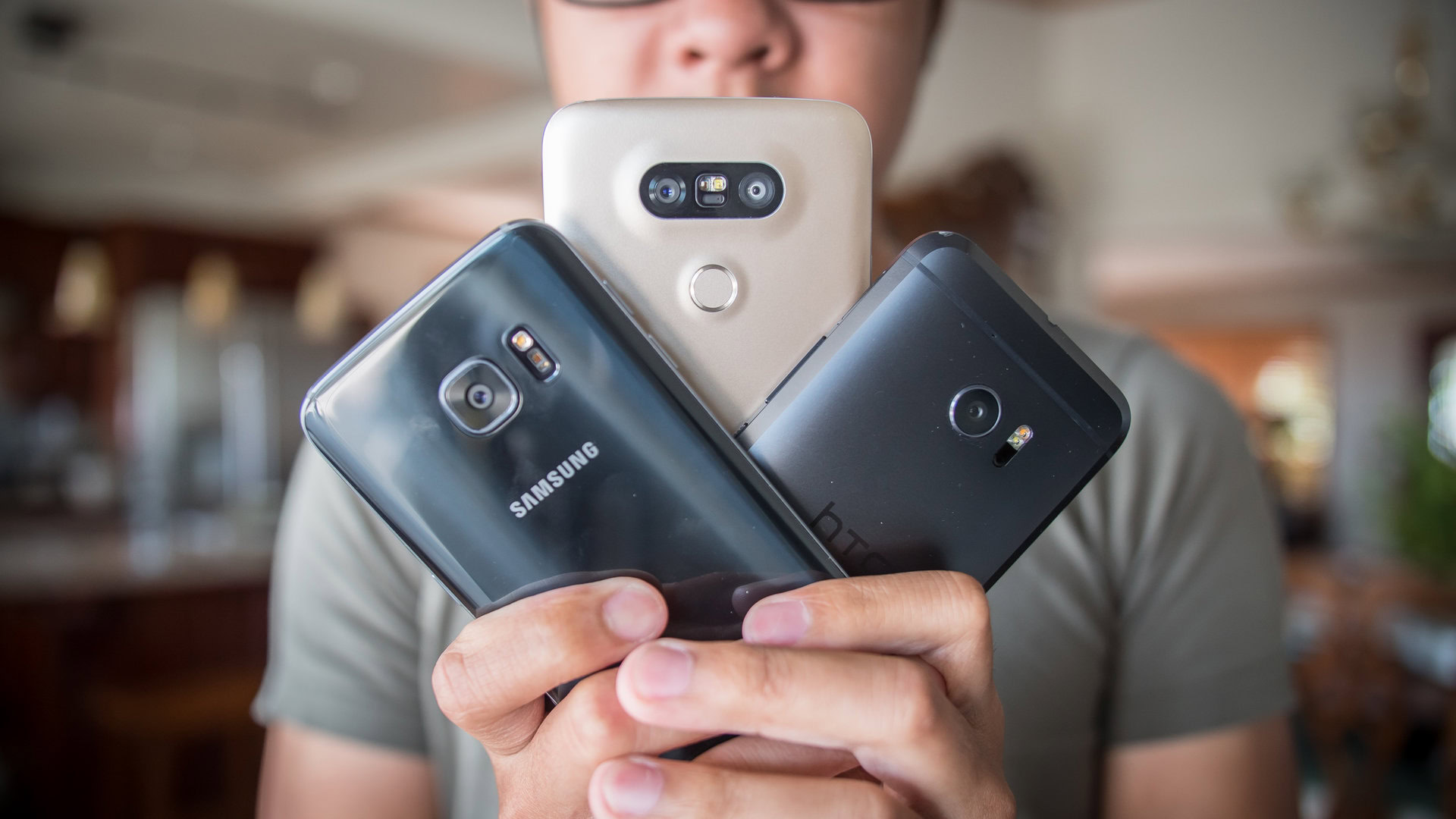
The camera has become an increasingly important aspect of the smartphone experience, and while Samsung and LG have historically been at the forefront in this area, previous HTCflagships have fallen short of expectations, which is something that the company is hoping to change this time around.
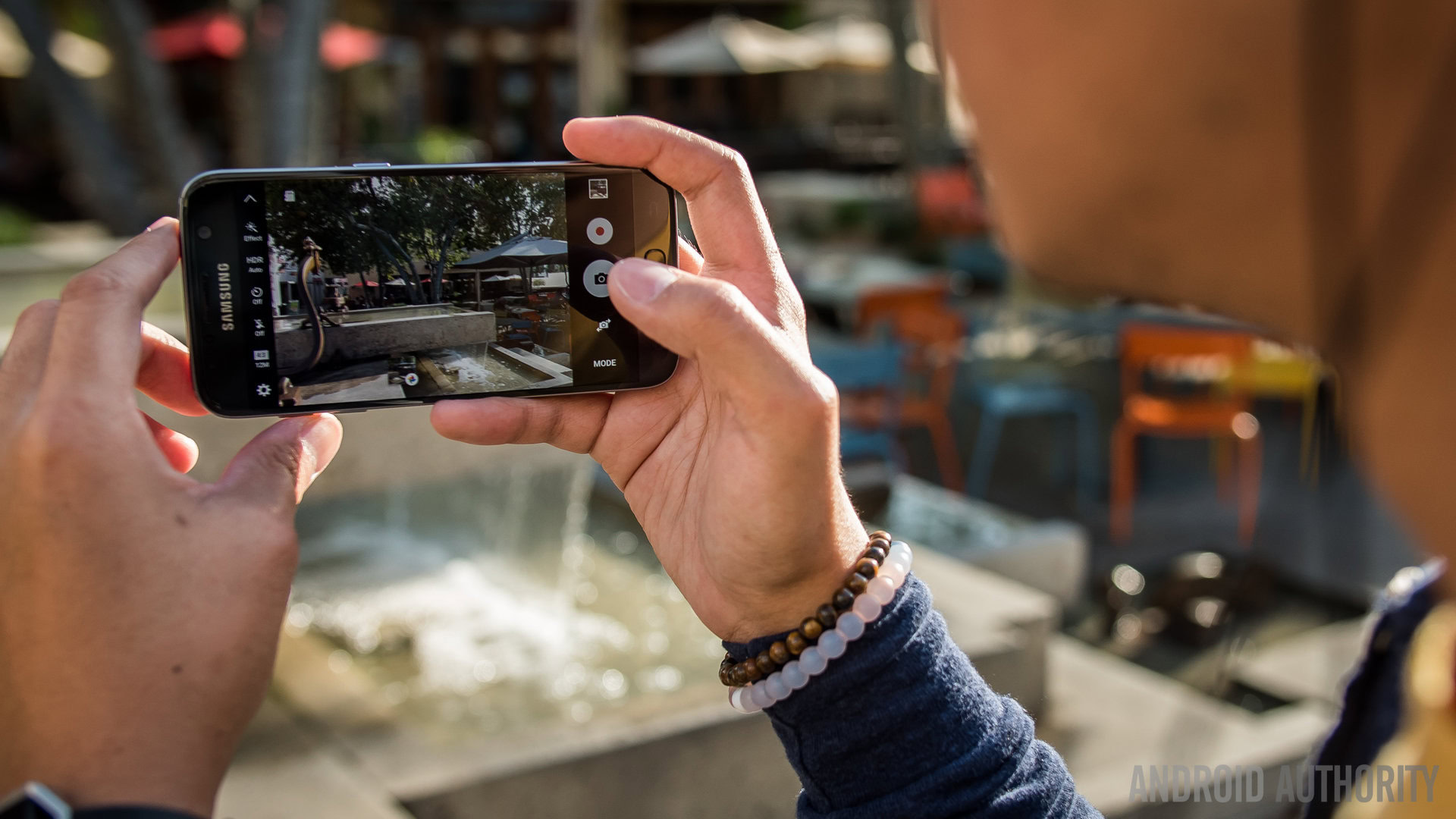
Starting with the Samsung Galaxy S7 and Galaxy S7 Edge, both smartphones come with a 12 MP rear camera, with a f/1.7 aperture and OIS, and a 5 MP front-facing unit with a wide angle lens. The cameras of the Samsung flagships have proven to be extremely reliable, and whether you are taking a picture in good lighting conditions or low-light situations, you can always be confident that you will get a good shot.
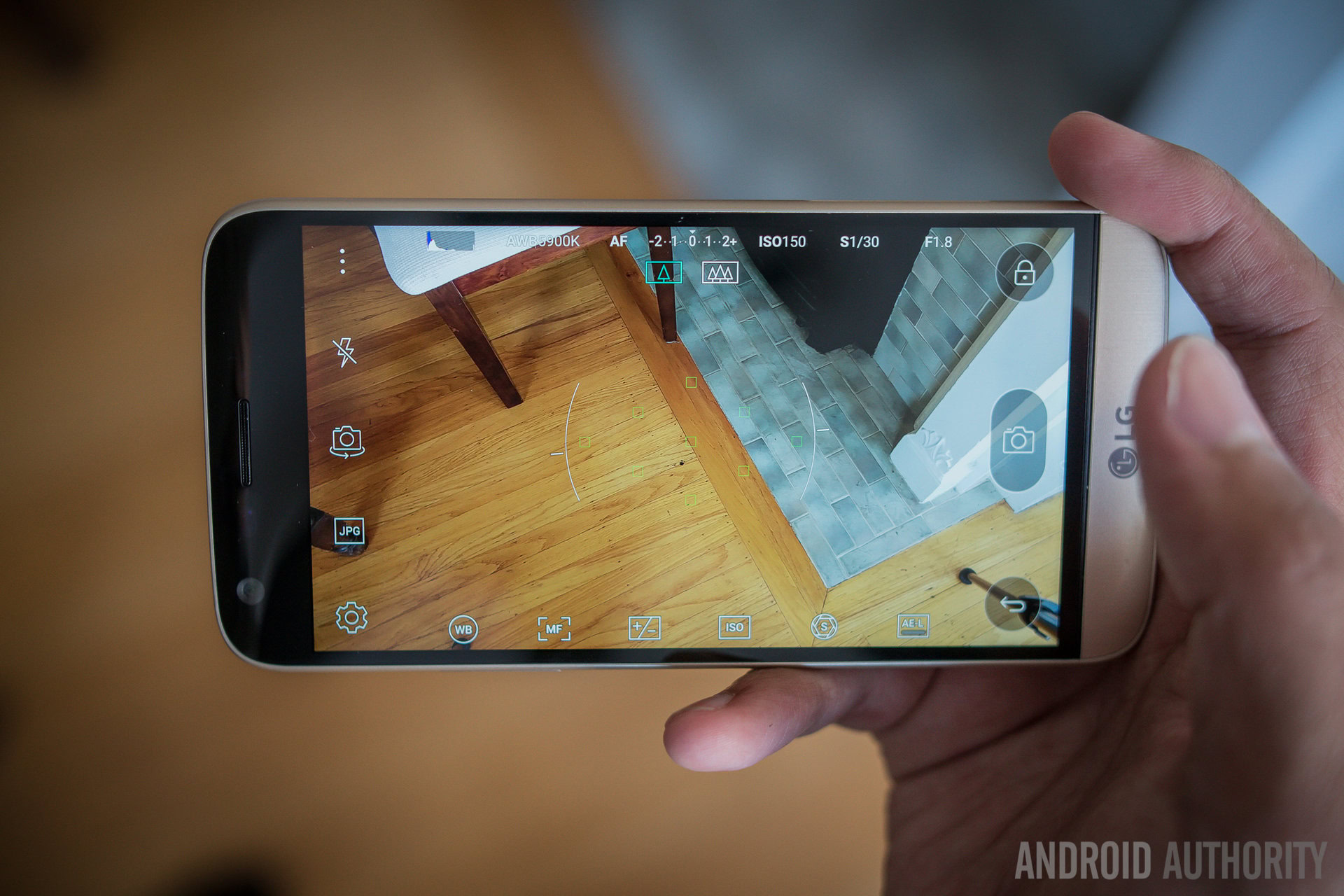
The LG G5 comes with a unique camera setup, with two cameras on the back, one being a 16 MP primary shooter, with a f/1.8 aperture and OIS, along paired with a wide angle lens 8 MP unit, as well as an 8 MP front-facing camera. LG hasn’t gone down the same route as Samsung and HTC, with the latter opting for fewer megapixels, in favor of larger pixel sizes. As mentioned, the secondary camera is an 8 MP sensor with a wide angle lens, that allows for some incredible looking wide angle photos. This is fantastic to use, and probably one of the best features of this device. As far as the front-facing camera is concerned, the 8 MP camera is capable of taking some decent looking selfies.
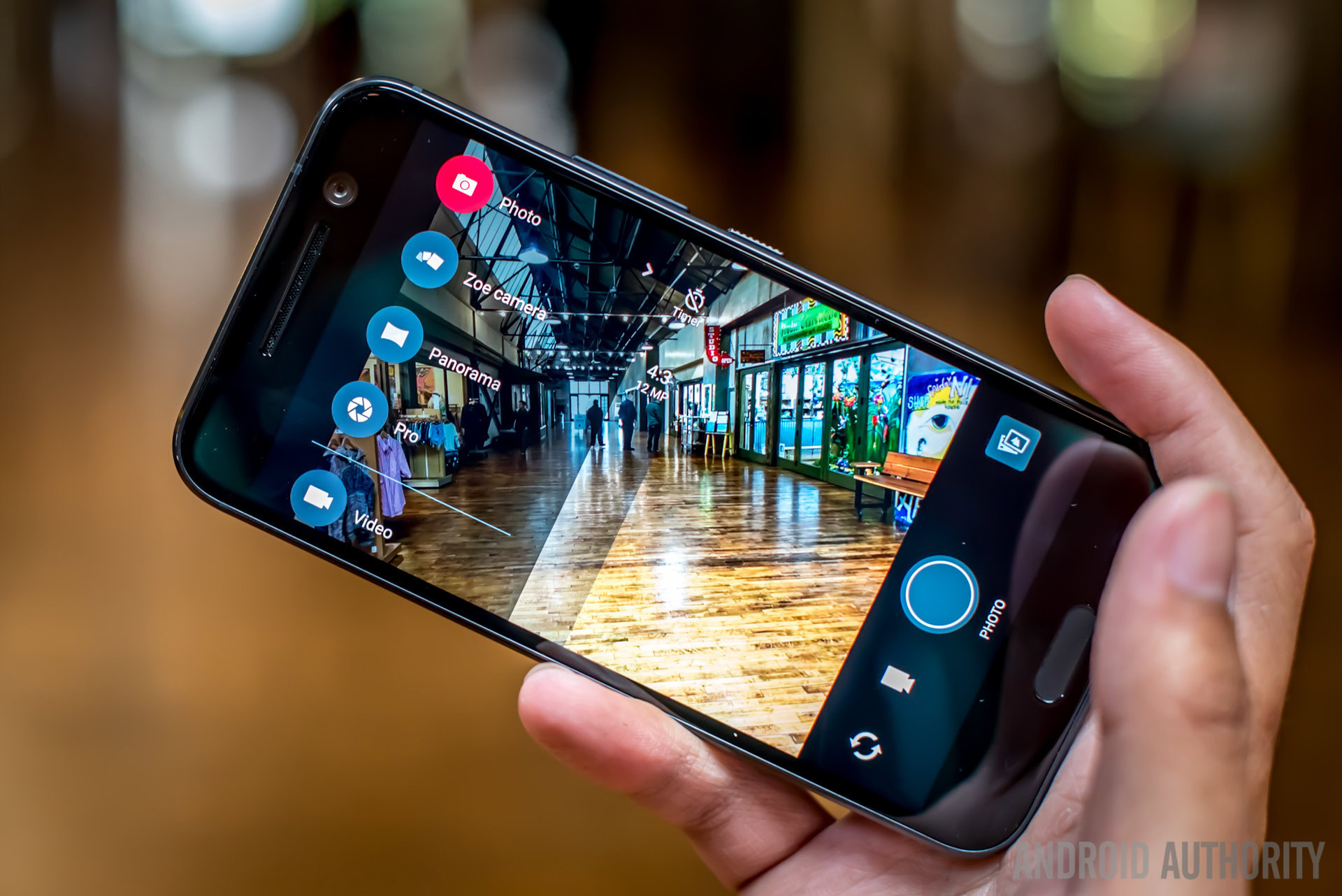
For the last couple of years, the camera has been a point of contention with HTC’s flagships, with the company going through a few different combinations to find the right fit. This year, much like what Samsung did, we get a 12 MP “Ultrapixel” camera, which essentially means the presence of larger pixel sizes, for better low light performance. The 5 MP front-facing camera of the HTC10 also comes with OIS, which is what makes this camera setup stand out from the crowd.
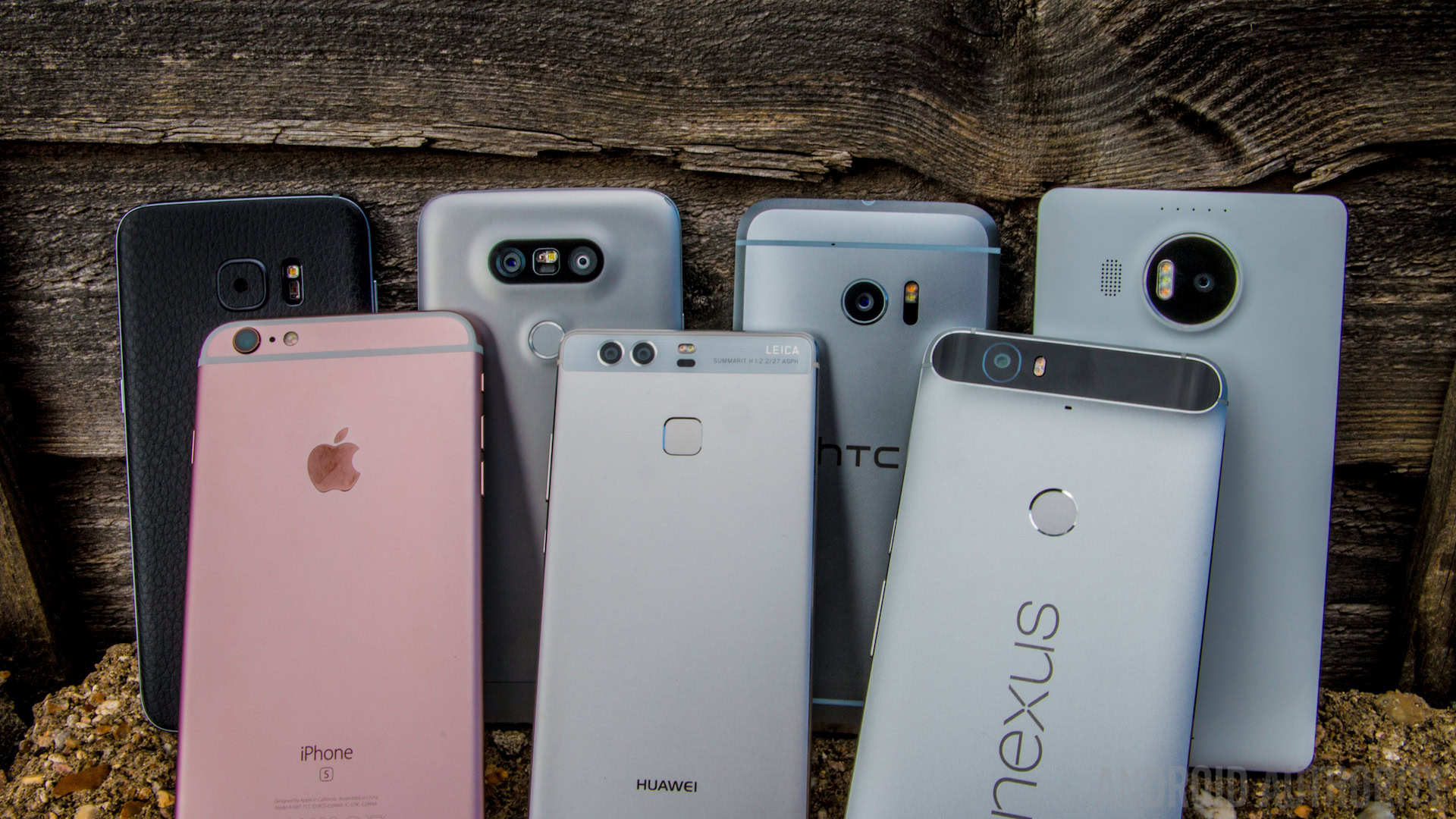
The other great addition is the excellent audio recording that is available when shooting video, regardless of which camera you are using, which is perfect for anyone into vlogging, or if recording video is a key part of your camera experience. The HTCcamera app has been quite streamlined as well, and taking a shot is quite fast as well. However, the manual mode leaves something to be desired, because of the fact that if you have all the sliders open, it ends up covering the entire viewfinder.
As far as image quality is concerned, all three of us reached a consensus with regards to the performance of these cameras. The thing you will notice right away is that the HTC10 tends to overexpose the images quite a lot, and the pictures also lack some color and contrast when compared to the shots taken with the Samsung Galaxy S7 and the LG G5. The next point of note is the fact that the Galaxy S7 has better dynamic range than the LG G5. The G5 tends to crush the shadows, resulting in the loss of a lot of detail. The LG G5 also suffers in low light conditions, with the camera not coming with the larger pixel sizes that the other two devices feature.
Unless video recording and simultaneous audio capture are important for you, which is one area in which the HTC10 camera excels, the Galaxy S7 and LG G5 do offer a lot more. That’s not to say that the HTC10 camera is bad by any stretch of the imagination, but it isn’t the best either.
HTC 10 camera samples
Samsung Galaxy S7 / Edge camera samples
LG G5 camera samples
Software
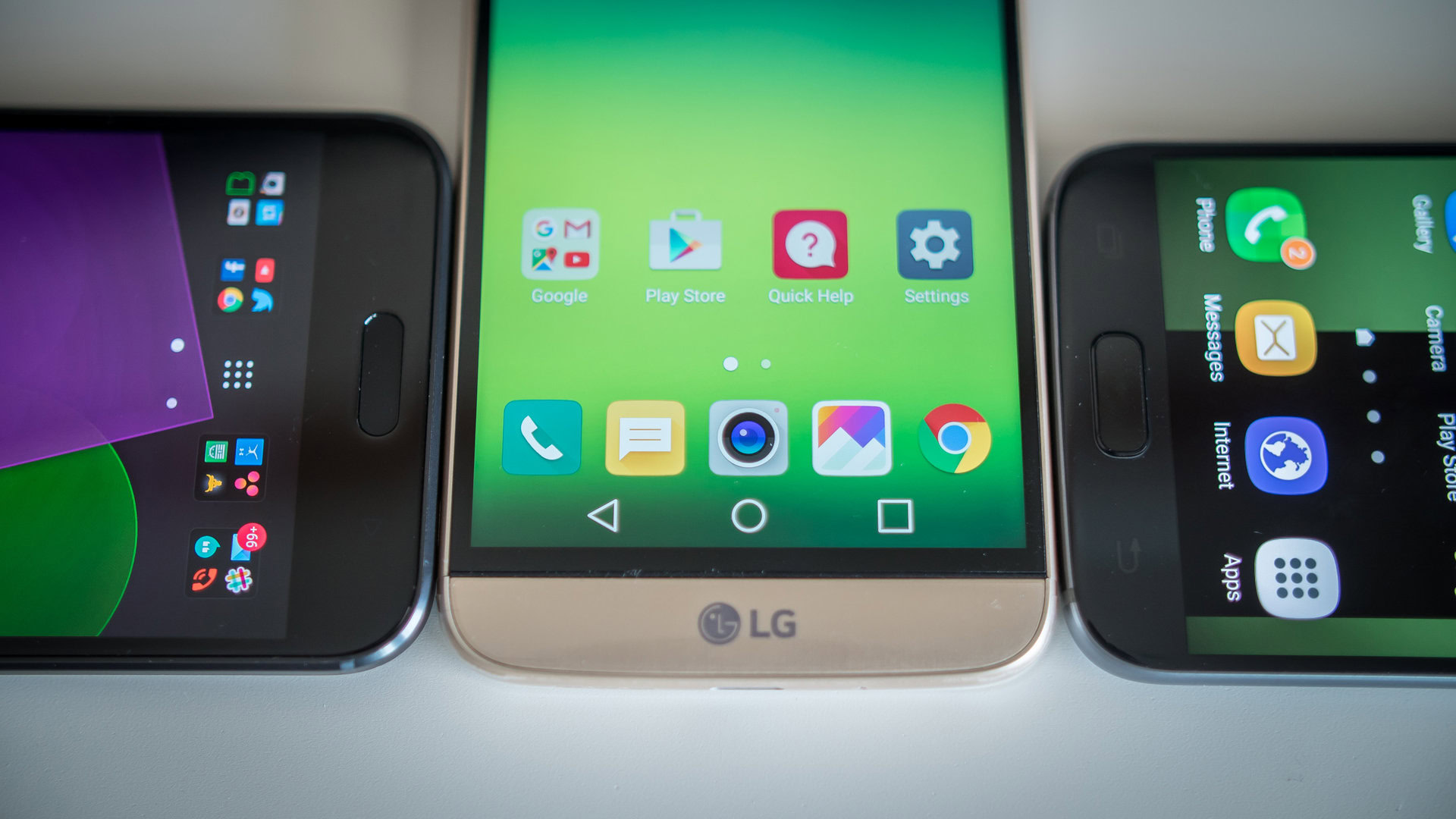
On the software side of things, all four smartphones are running Android 6.0 Marshmallow, with their respective custom user interfaces on top. Starting with the HTC10, returning is the Sense UI, which is a take on Android that is quite close to a stock Android experience. If you’ve used an HTCdevice before, you will be familiar with the various elements of the Sense UI, and also returning is BlinkFeed, which has always been my favorite news aggregation second screen experience, more than Briefing, or anything that LG has to offer. Ultimately, what is great about the Sense UI is that it remains very intuitive and easy to navigate, with everything where you’d expect it to be, and is a very functional version of Android.
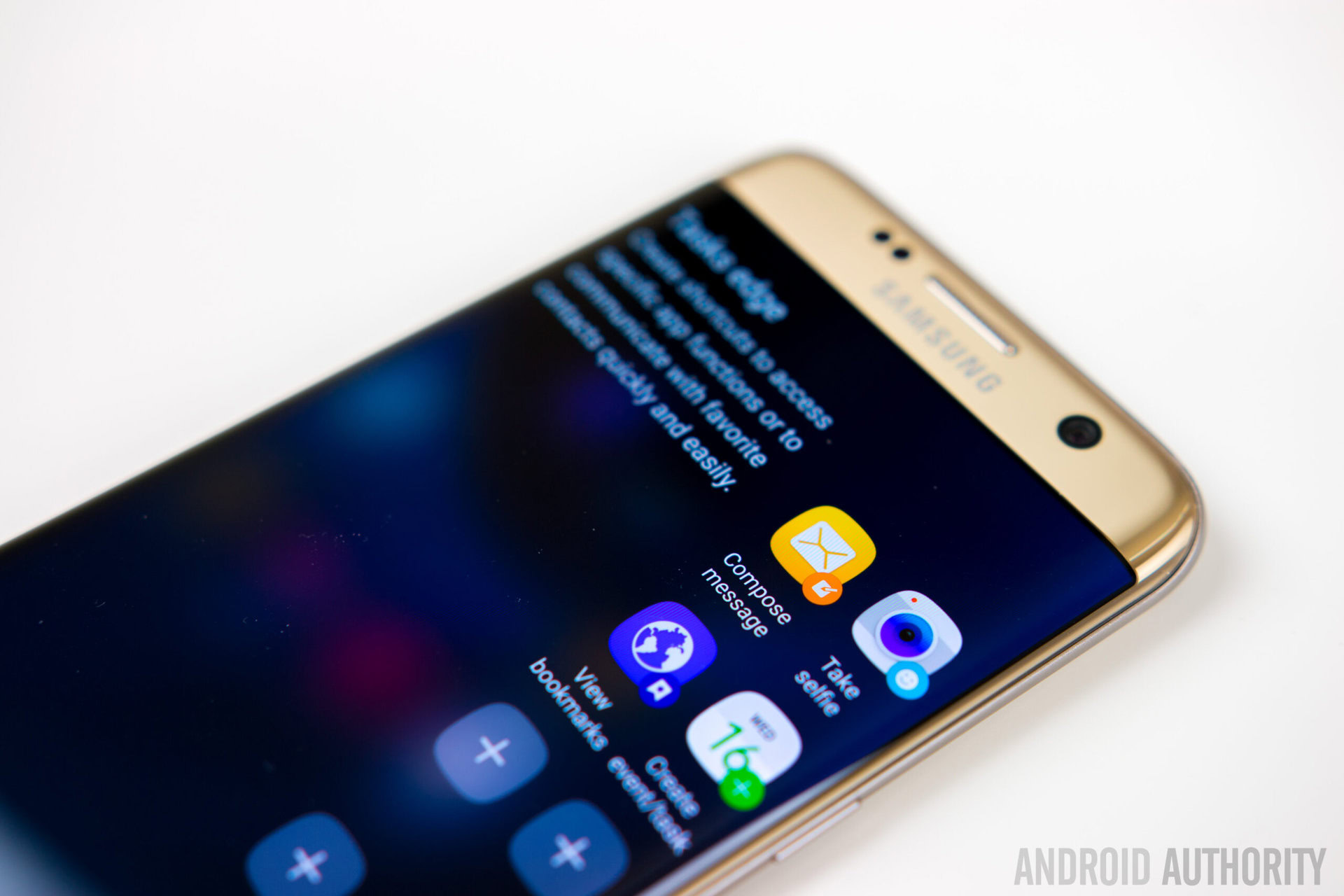
Moving on to the Samsung flagships, TouchWiz has been getting better every year, and the latest version of the UI is the best yet. TouchWiz is far more toned down now, and the color scheme has also been changed to a more subtle blue, white, and grey. Of course, you also have the option of changing the look completely via the very robust theme store. As far as the features are concerned, you get the various multi-tasking options that Samsung has always included, and the Galaxy S7 Edge also comes with improved Edge panels. The Edge panels allow for easy and quick access to app shortcuts, favorite contacts, pre-selected functions, and news and weather information. If you can leverage this feature properly, it will make the overall experience faster and easier.
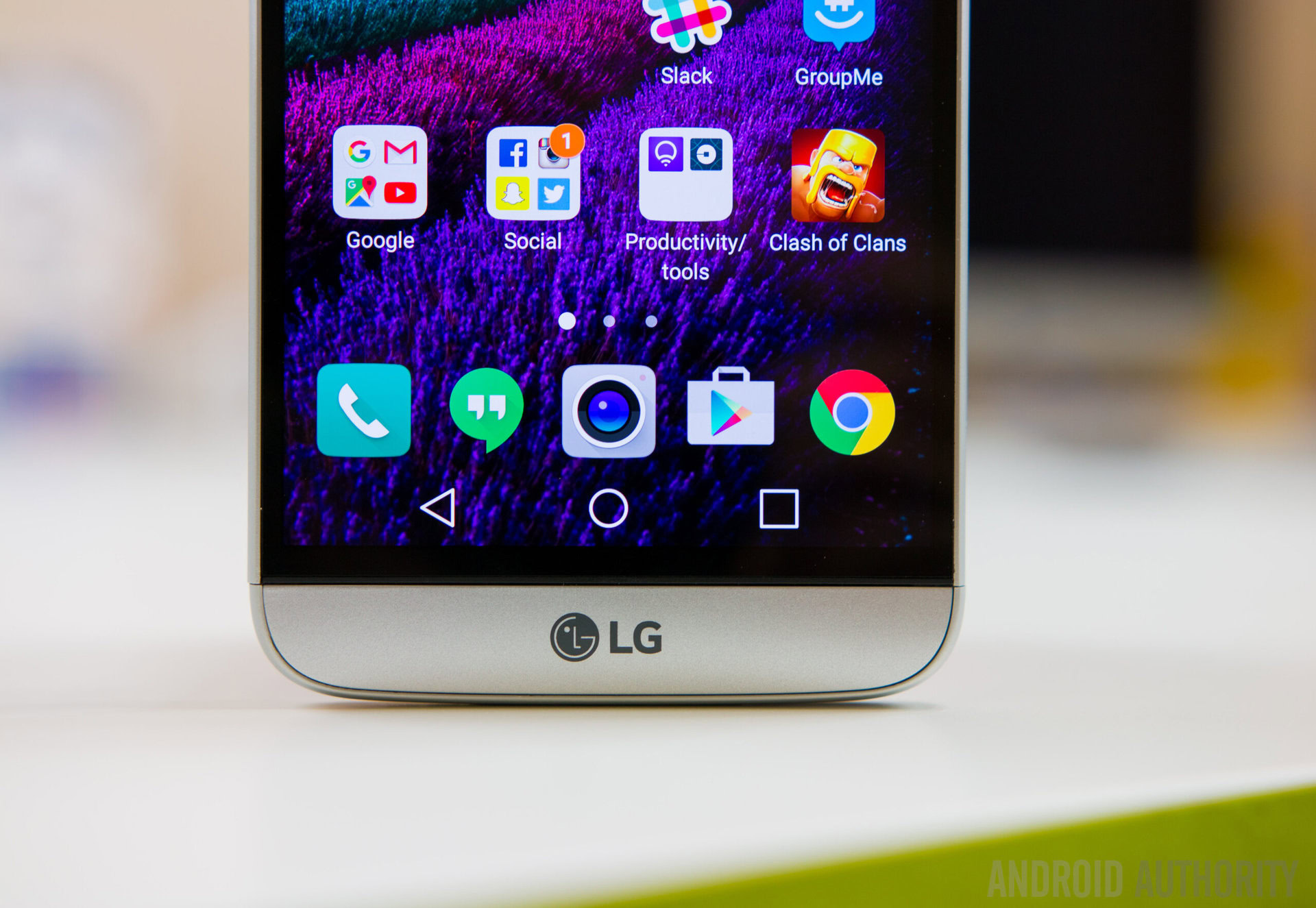
With the LG G5, you get the LG UX, which isn’t the best looking custom interface out there, but it certainly is an improvement over previous versions of the G UI. It remains a little bit cartoon-y as far as the icon pack and animations are concerned, but the overall experience is cleaner than it has ever been before, with a lot of the software features that LG used to pack into their devices now gone, or at least, better hidden, like Smart Bulletin and QSlide apps. Of course, the biggest change here is the lack of an app drawer, so the only way of keeping things organized is by using folders. However, you do have the option to bring back the app drawer by downloading the LG Home 4.0 launcher from the SmartWorld app, or by downloading a third-party launcher from the Google Play Store.
Specs comparison
| HTC 10 | Samsung Galaxy S7 | Samsung Galaxy S7 Edge | LG G5 | |
|---|---|---|---|---|
Display | HTC 10 5.2-inch Super LCD5 display Quad HD resolution, 565 ppi | Samsung Galaxy S7 5.1-inch Super AMOLED display Quad HD resolution, 577 ppi | Samsung Galaxy S7 Edge 5.5-inch Super AMOLED display Quad HD resolution, 534 ppi | LG G5 5.3-inch IPS LCD display Quad HD resolution, 544 ppi |
Processor | HTC 10 2.15 GHz quad-core Qualcomm Snapdragon 820 Adreno 530 GPU | Samsung Galaxy S7 2.15 GHz quad-core Qualcomm Snapdragon 820 Adreno 530 GPU | Samsung Galaxy S7 Edge 2.15 GHz quad-core Qualcomm Snapdragon 820 Adreno 530 GPU | LG G5 2.15 GHz quad-core Qualcomm Snapdragon 820 Adreno 530 GPU |
RAM | HTC 10 4 GB | Samsung Galaxy S7 4 GB | Samsung Galaxy S7 Edge 4 GB | LG G5 4 GB |
Storage | HTC 10 32/64 GB expandable via microSD up to 200 GB | Samsung Galaxy S7 32/64 GB expandable via microSD up to 200 GB | Samsung Galaxy S7 Edge 32/64 GB expandable via microSD up to 200 GB | LG G5 32 GB expandable via microSD up to 200 GB |
Camera | HTC 10 12 MP rear camera, f/1.8 aperture, 1.55µm pixel size, OIS, laser autofocus 5 MP front-facing camera, f/1.8 aperture, OIS | Samsung Galaxy S7 12 MP rear camera, f/1.7 aperture, 1.4µm pixel size, OIS 5 MP front-facing camera, f/1.7 aperture | Samsung Galaxy S7 Edge 12 MP rear camera, f/1.7 aperture, 1.4µm pixel size, OIS 5 MP front-facing camera, f/1.7 aperture | LG G5 16 MP (f/1.8) + 8 MP (f/2.4) rear cameras, laser autofocus, OIS 8 MP front-facing camera |
Connectivity | HTC 10 Wi-Fi 802.11 a/b/g/n/ac Bluetooth 4.2 GPS + GLONASS NFC USB 3.1, Type-C 1.0 connector | Samsung Galaxy S7 Wi-Fi 802.11 a/b/g/n/ac Bluetooth 4.2 GPS + GLONASS NFC microUSB 2.0 | Samsung Galaxy S7 Edge Wi-Fi 802.11 a/b/g/n/ac Bluetooth 4.2 GPS + GLONASS NFC microUSB 2.0 | LG G5 Wi-Fi 802.11 a/b/g/n/ac Bluetooth 4.2 GPS + GLONASS NFC IR USB 3.0, Type-C 1.0 connector |
Battery | HTC 10 3,000 mAh non removable | Samsung Galaxy S7 3,000 mAh non removable | Samsung Galaxy S7 Edge 3,600 mAh non removable | LG G5 2,800 mAh removable |
Software | HTC 10 Android 6.0.1 Marshmallow HTC Sense UI | Samsung Galaxy S7 Android 6.0.1 Marshmallow Samsung TouchWiz UI | Samsung Galaxy S7 Edge Android 6.0.1 Marshmallow Samsung TouchWiz UI | LG G5 Android 6.0.1 Marshmallow LG UX |
Dimensions | HTC 10 145.9 x 71.9 x 9 mm 161 grams | Samsung Galaxy S7 142.4 x 69.6 x 7.9 mm 152 grams | Samsung Galaxy S7 Edge 150.9 x 72.6 x 7.7 mm 157 grams | LG G5 149.4 x 73.9 x 7.7 mm 159 grams |
Gallery
Final thoughts
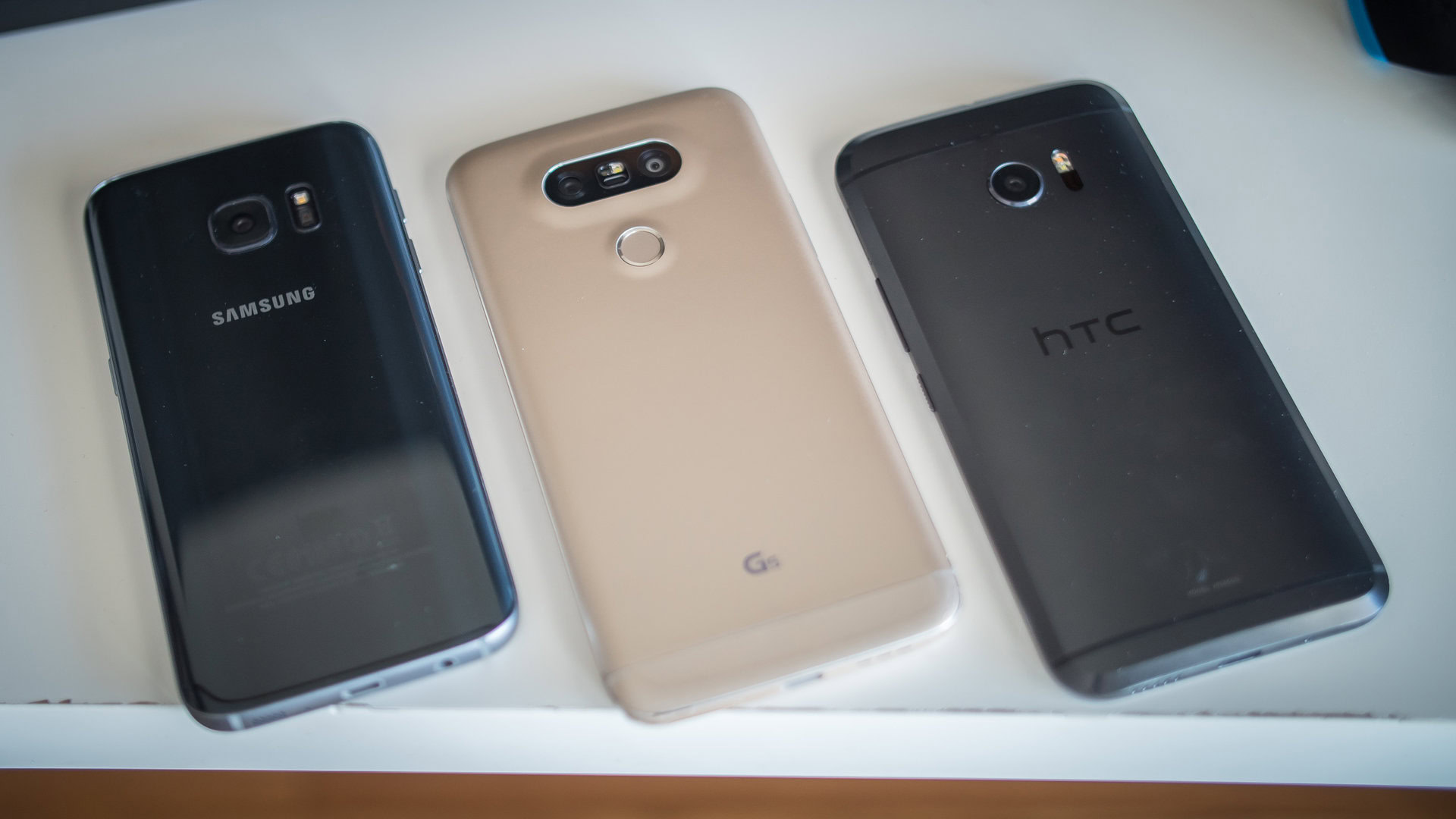
So there you have it for this closer look at the HTC10 vs Samsung Galaxy S7 / Galaxy S7 Edge vs LG G5! The big question here which device each of us would pick, and Lanh’s choice is the Samsung Galaxy S7 Edge. Samsung has really refined the design, and key improvements across the board have made a big difference. The Galaxy S7 Edge comes with a bigger display, bigger battery, and more functionality with the Edge panels, making the curved edges more than just about the aesthetics.
Krystal believes that the camera is key to the smartphone experience, which is why her choice is also the Samsung flagships. However, while the HTC10 has slightly fallen behind when it comes to the camera, the device has certainly impressed with its BoomSound speakers and audio capabilities. So if that is something that is important to you, the HTC10 is a great choice as well.
- LG G5 review
- Galaxy S7 review
- Galaxy S7 Edge review
- HTC 10 review
- Galaxy S7 Edge vs LG G5
- What do the public think of the Galaxy S7 Edge and LG G5?
What do you think of these three devices and which would you buy? Check out the links above, vote in the poll and let us know your views in the comments below!